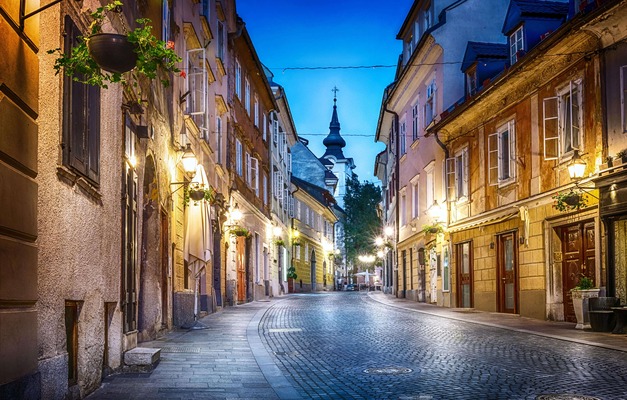
2-Week Journey Through Central & Eastern Europe: History
 14 Day Tour of Berlin, Prague, Vienna, Budapest and Krakow
14 Day Tour of Berlin, Prague, Vienna, Budapest and Krakow
Overview
Trip Map
Itinerary
Inclusions
Reviews







14 Days 13 Nights
Best Time: Jan-Dec
Cultural Exploration
WWII History & Communist Era
See the best of Central Europe on this captivating journey through five iconic cities: Berlin, Prague, Vienna, Budapest, and Krakow. The well-rounded trip offers a unique perspective on the region’s fascinating history, including the impact of WWII, while also allowing you to enjoy three scenic city river cruises. Explore famous sites like the Charles Bridge, Schönbrunn Palace, and Wawel Castle, with private guided tours in each city. You'll explore with ease and learn about the region’s rich culture, stunning architecture, and vibrant Jewish heritage with the help of the detailed itinerary guidance provided in Go Real Travel's mobile app.
- Visit Berlin’s Jewish Museum and see Checkpoint Charlie and remains of the Berlin Wall.
- Stroll across Prague’s Charles Bridge and wander the courtyards of its famous castle complex.
- Experience the opulent architecture and lush gardens of the Schönbrunn Palace in Vienna.
- Cruise along the Danube River in Budapest, passing under stunning bridges and illuminated monuments.
- Explore Krakow’s magnificent Wawel Castle, a symbol of Polish royal history.
See the best of Central Europe on this captivating journey through five iconic cities: Berlin, Prague, Vienna, Budapest, and Krakow. The well-rounded trip offers a unique perspective on the region’s fascinating history, including the impact of WWII, while also allowing you to enjoy three scenic city river cruises. Explore famous sites like the Charles Bridge, Schönbrunn Palace, and Wawel Castle, with private guided tours in each city. You'll explore with ease and learn about the region’s rich culture, stunning architecture, and vibrant Jewish heritage with the help of the detailed itinerary guidance provided in Go Real Travel's mobile app.
- Visit Berlin’s Jewish Museum and see Checkpoint Charlie and remains of the Berlin Wall.
- Stroll across Prague’s Charles Bridge and wander the courtyards of its famous castle complex.
- Experience the opulent architecture and lush gardens of the Schönbrunn Palace in Vienna.
- Cruise along the Danube River in Budapest, passing under stunning bridges and illuminated monuments.
- Explore Krakow’s magnificent Wawel Castle, a symbol of Polish royal history.

The Brandenburg Gate
Historic Landmarks

The Berlin Wall
Historic Landmarks

Prague Castle
Castles & Chateaux

Charles Bridge
Historic Landmarks

Schönbrunn Palace & Zoo
Parks & Gardens

National Museum
Museums & Galleries

Central Market
Street Markets

Castle Hill
Castles & Chateaux

Old Town
Architecture
Must see sights

The Brandenburg Gate
Historic Landmarks

The Berlin Wall
Historic Landmarks

Prague Castle
Castles & Chateaux

Charles Bridge
Historic Landmarks

Schönbrunn Palace & Zoo
Parks & Gardens

National Museum
Museums & Galleries

Central Market
Street Markets

Castle Hill
Castles & Chateaux

Old Town
Architecture
Starting from
$2875
per person
 Not included
Not included Secure Your Customizable Trip
Enter your details to embark on a journey that can be tailored just for you.
Start
Travelers
Add Room
Remove Room
Preferred Hotel Stars
Craft Your Own Itinerary
Select your interests and destinations for a trip plan inspired by you.
Trip Map & Itinerary
Enable/Disable Map Scrolling
Click To Make Map Interactive

Trip Timeline
 Edit Details
Edit DetailsArrival
2 nights
Berlin
Germany
Train: 4.5h
3 nights
Prague
Czech Republic
Train: 4.5h
2 nights
Vienna
Austria
Train: 3h
3 nights
Budapest
Hungary
Shuttle: 8h
3 nights
Krakow
Poland
Departure
Day-By-Day Itinerary
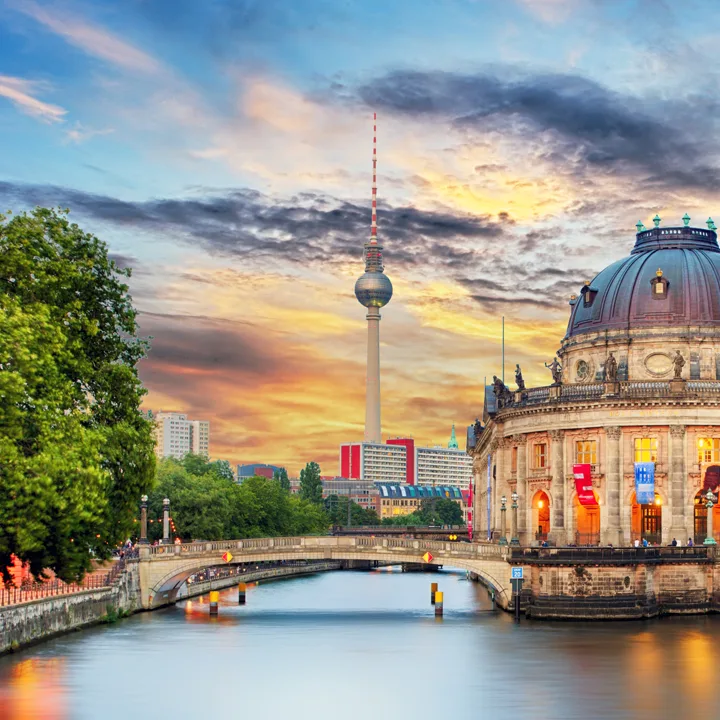
Day 1
Arrive Berlin
View More
Day 1
Arrive Berlin



To Be Determined
Airport Transfer by Taxi or Train
Flying into Berlin you will arrive in the brand new Berlin Brandenburg Airport to the south of the city. Taxis are available at the airport, or you can arrange a private transfer for added convenience. The cheapest and fastest way to reach central Berlin is by train. The Airport Express train delivers you to Berlin's main station (Hauptbahnhof) in the center of the city, from where you can easily hail a taxi.

Day 1
Arrive Berlin
View More


Day 1
Arrive Berlin




To Be Determined:
Airport Transfer
Mid-Day/Afternoon:
TV Tower & Old Berlin
Late Afternoon:
Courtyards of Berlin

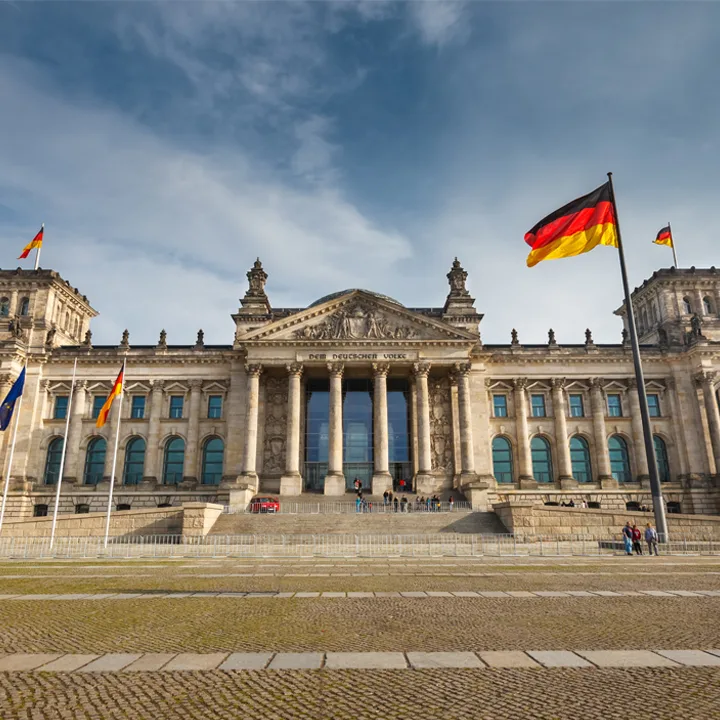
Day 2
Berlin
View More
Day 2
Berlin




9:00 AM - 12:00 PM
Highlights of Berlin Guided Walking Tour
On this 3 hour tour, your guide will show you the highlights of Berlin and help you understand what makes this city so unique. Sites visited will include the boulevard Unter den Linden, the Gendarmenmarkt, Check Point Charlie, remnants of the Berlin Wall, Potsdamer Platz, the Holocaust Memorial, the Brandenburg Gate, and the Reichstag.

Brandenburg Gate
Quadriga. Hey, There's a Word to Know When Learning About this Historic Gate
Show More

Reichstag
Make your way to the top of the dome enjoying amazing views and looking down at debating members of the German Parliament below.
Show More

Brandenburg Gate
Quadriga. Hey, There's a Word to Know When Learning About this Historic Gate
Show More

Reichstag
Make your way to the top of the dome enjoying amazing views and looking down at debating members of the German Parliament below.
Show More

Brandenburg Gate
Quadriga. Hey, There's a Word to Know When Learning About this Historic Gate
Show More

Reichstag
Make your way to the top of the dome enjoying amazing views and looking down at debating members of the German Parliament below.
Show More
prev
next

Day 2
Berlin
View More

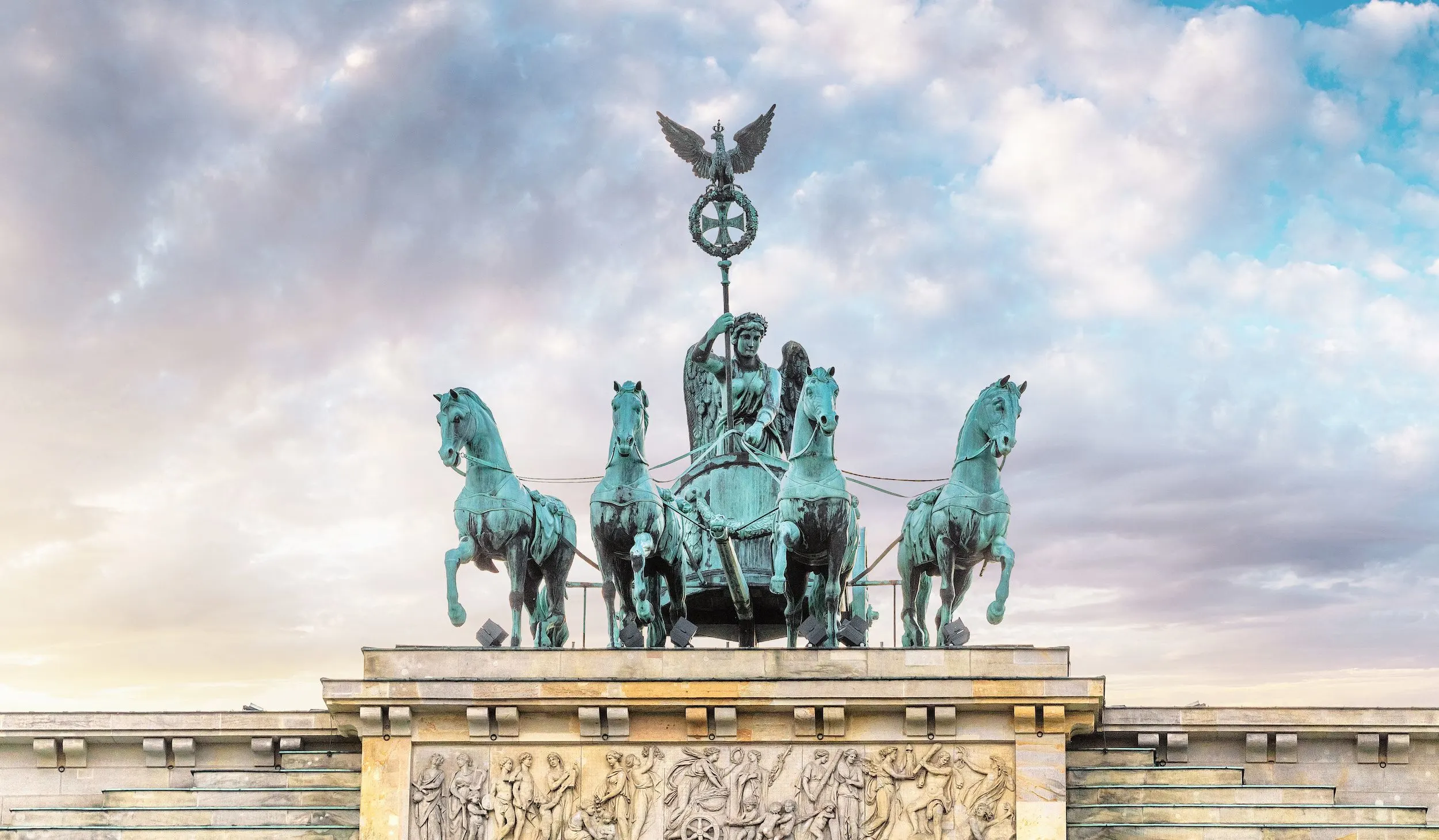
Brandenburg Gate
 Highlight of Guided Walking Tour of Berlin
Highlight of Guided Walking Tour of BerlinQuadriga. Hey, There's a Word to Know When Learning About this Historic Gate
The Brandenburg Gate was built as a symbol of peace, perverted into a symbol of power by the Nazis, and became a symbol of division during the Cold War. Now, however, it is a symbol of reunification. Completed in 1791, it was topped by the quadriga, a chariot drawn by four horses driven by the goddess of peace. Napoleon seized the quadriga as a spoil of war, but after his defeat, it was returned to the city and met by cheering crowds along the way, transforming the goddess of peace into a goddess of victory, holding a Germanic cross.
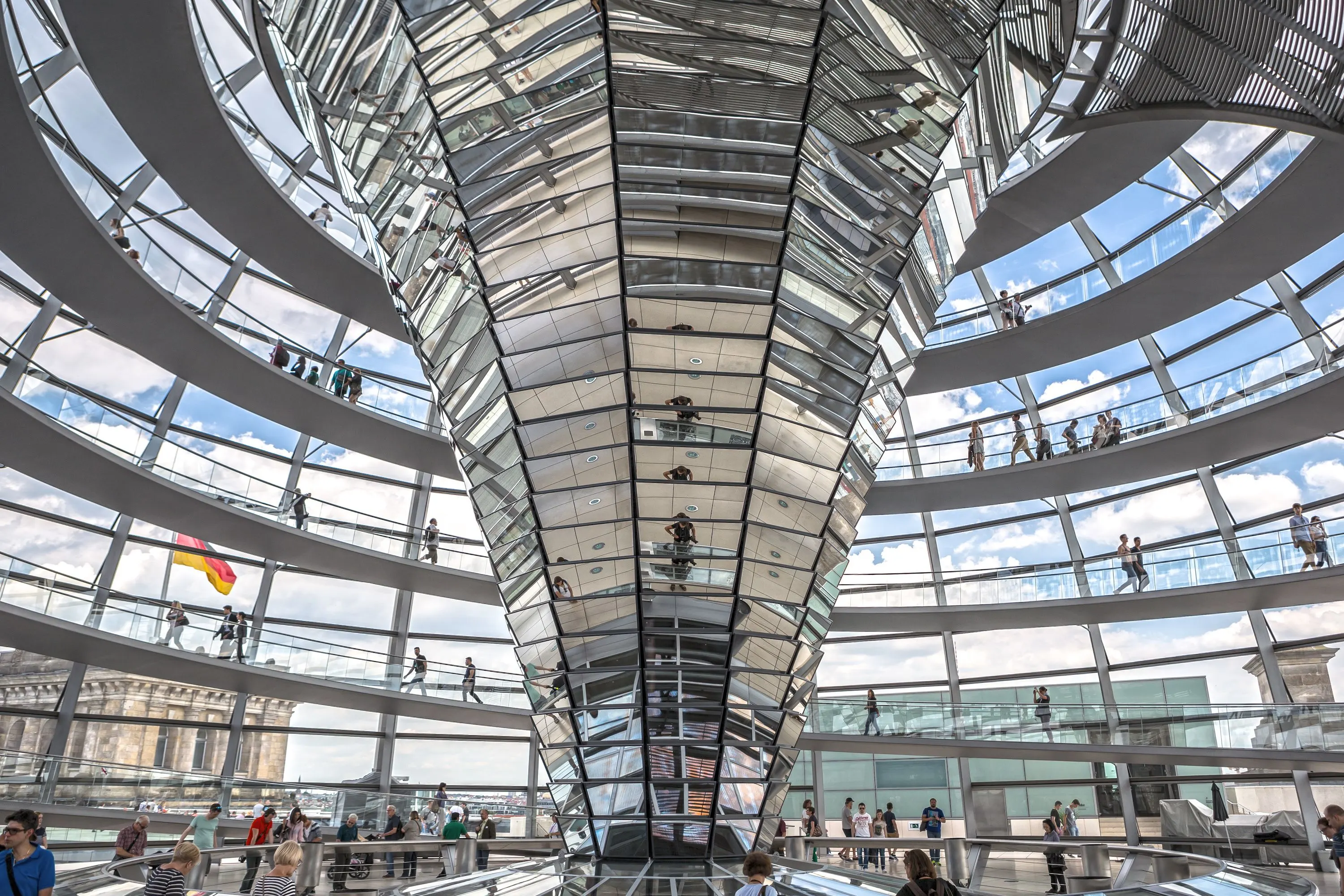
Reichstag
 Highlight of Guided Walking Tour of Berlin
Highlight of Guided Walking Tour of BerlinMake your way to the top of the dome enjoying amazing views and looking down at debating members of the German Parliament below.
Officially, the Reichstag is actually the Bundestag, which means the federal parliament. The Reichstag was reduced to a ruined shell by arson in 1933 and by World War II fighting, but it was rebuilt with a striking egg-shaped glass dome. Visitors are given a free audio guide that discusses the building’s history and architecture, while also orientating you to the sites of Berlin. It is an excellent introduction to the city. Note that it is usually necessary to book well in advance!

Brandenburg Gate
 Highlight of Guided Walking Tour of Berlin
Highlight of Guided Walking Tour of BerlinQuadriga. Hey, There's a Word to Know When Learning About this Historic Gate
The Brandenburg Gate was built as a symbol of peace, perverted into a symbol of power by the Nazis, and became a symbol of division during the Cold War. Now, however, it is a symbol of reunification. Completed in 1791, it was topped by the quadriga, a chariot drawn by four horses driven by the goddess of peace. Napoleon seized the quadriga as a spoil of war, but after his defeat, it was returned to the city and met by cheering crowds along the way, transforming the goddess of peace into a goddess of victory, holding a Germanic cross.

Reichstag
 Highlight of Guided Walking Tour of Berlin
Highlight of Guided Walking Tour of BerlinMake your way to the top of the dome enjoying amazing views and looking down at debating members of the German Parliament below.
Officially, the Reichstag is actually the Bundestag, which means the federal parliament. The Reichstag was reduced to a ruined shell by arson in 1933 and by World War II fighting, but it was rebuilt with a striking egg-shaped glass dome. Visitors are given a free audio guide that discusses the building’s history and architecture, while also orientating you to the sites of Berlin. It is an excellent introduction to the city. Note that it is usually necessary to book well in advance!

Brandenburg Gate
 Highlight of Guided Walking Tour of Berlin
Highlight of Guided Walking Tour of BerlinQuadriga. Hey, There's a Word to Know When Learning About this Historic Gate
The Brandenburg Gate was built as a symbol of peace, perverted into a symbol of power by the Nazis, and became a symbol of division during the Cold War. Now, however, it is a symbol of reunification. Completed in 1791, it was topped by the quadriga, a chariot drawn by four horses driven by the goddess of peace. Napoleon seized the quadriga as a spoil of war, but after his defeat, it was returned to the city and met by cheering crowds along the way, transforming the goddess of peace into a goddess of victory, holding a Germanic cross.

Reichstag
 Highlight of Guided Walking Tour of Berlin
Highlight of Guided Walking Tour of BerlinMake your way to the top of the dome enjoying amazing views and looking down at debating members of the German Parliament below.
Officially, the Reichstag is actually the Bundestag, which means the federal parliament. The Reichstag was reduced to a ruined shell by arson in 1933 and by World War II fighting, but it was rebuilt with a striking egg-shaped glass dome. Visitors are given a free audio guide that discusses the building’s history and architecture, while also orientating you to the sites of Berlin. It is an excellent introduction to the city. Note that it is usually necessary to book well in advance!
prev
next

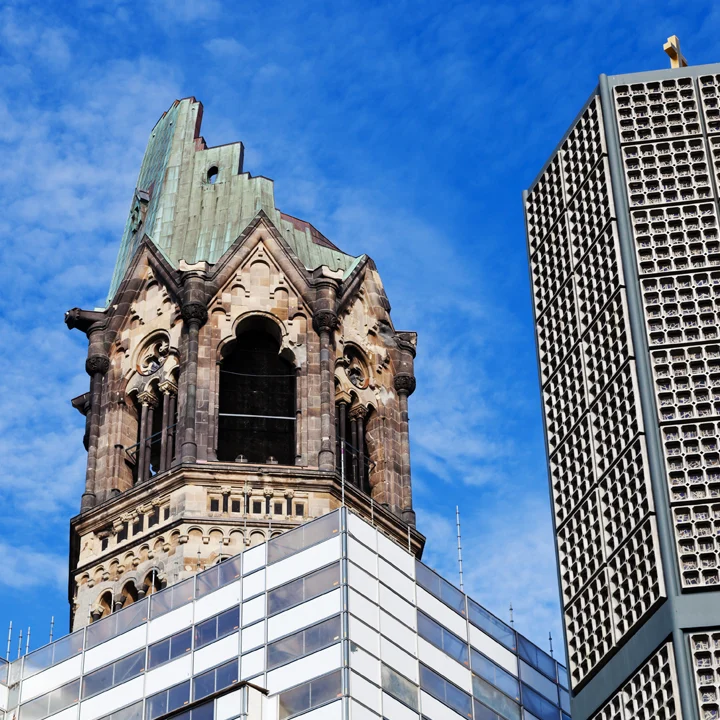
Day 3
Berlin to Prague
View More
Day 3
Berlin to Prague





Morning
Stroll the Kurfürstendamm in West Berlin
In the 1920's the elegant, tree-line boulevard known as the Kurfürstendamm was the center of Berlin's nightlife and leisure scene, attracting writers, film stars, and artists. WWII left it in ruins, and today at the end of the boulevard you'll discover a chilling reminder of that destruction: the purposefully unrecontructed remains of the Memorial Church. During the Cold War, the Kurfürstendamm and its surroundings were central to West Berlin's revitalized identity. This was perhaps best symbolized by the famous KaDeWe, the gigantic department store which served as a symbol of market capitalism lodged in the heart of the Iron Curtain.

Berlin Zoo
Visit Germany's Oldest and Best Known Zoo.
Show More

KaDeWe
Shop in the iconic department store of capitalist West Berlin
Show More

Memorial Church
Remind yourself of war's destructiveness by visiting the ruins of this church destroyed during WWII.
Show More

Story of Berlin Museum
Take an interactive crash course in Berlin history. (Re-opening Autumn 2021)
Show More

Berlin Zoo
Visit Germany's Oldest and Best Known Zoo.
Show More

KaDeWe
Shop in the iconic department store of capitalist West Berlin
Show More

Memorial Church
Remind yourself of war's destructiveness by visiting the ruins of this church destroyed during WWII.
Show More

Story of Berlin Museum
Take an interactive crash course in Berlin history. (Re-opening Autumn 2021)
Show More
prev
next

Day 3
Berlin to Prague
View More

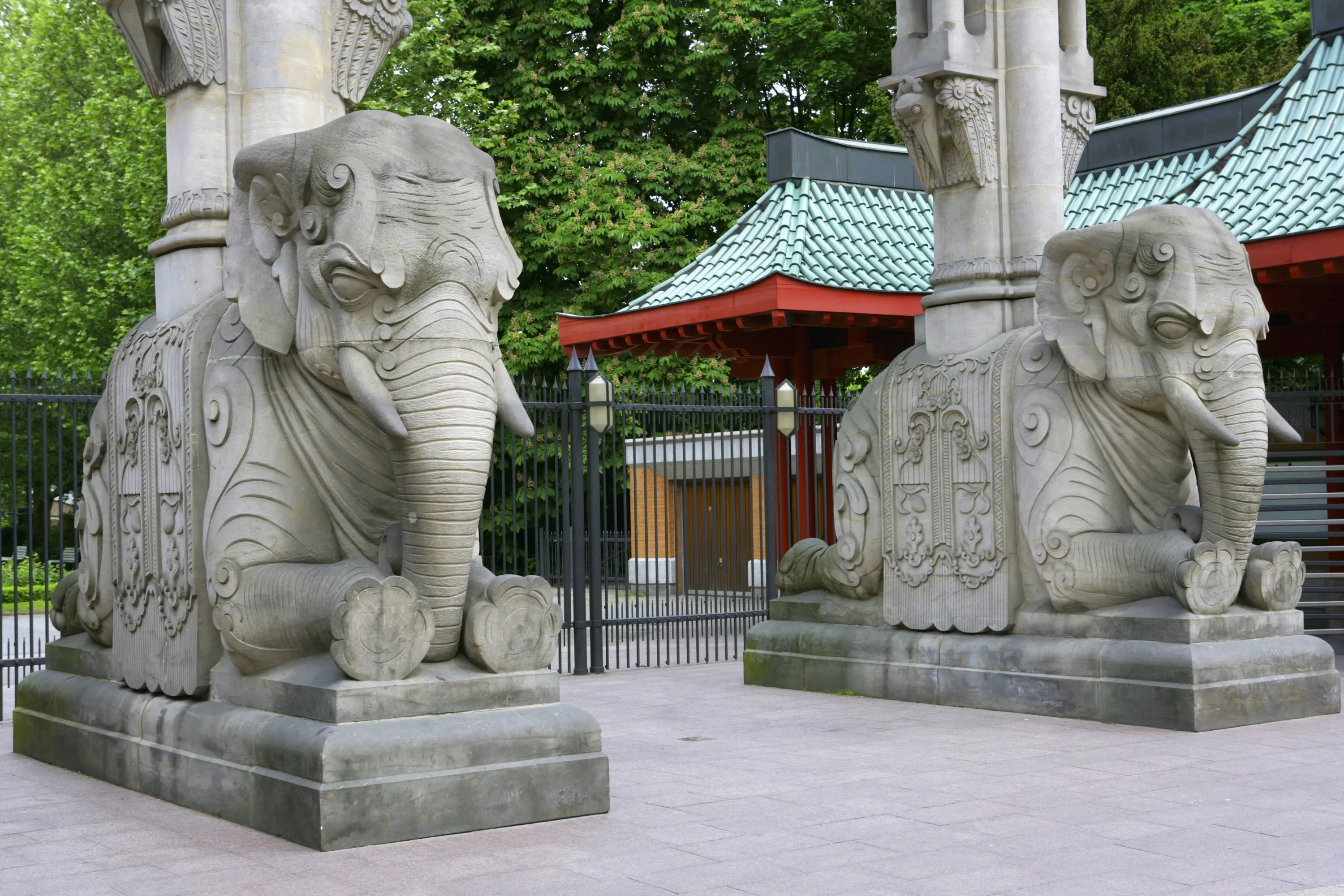
Berlin Zoo
 Highlight of City West
Highlight of City WestVisit Germany's Oldest and Best Known Zoo.
Founded in 1844, the Zoologischer Garten Berlin was the first zoo in Germany and features some wonderful animal-inspired architecture as well. The original animals were donated by King Frederick William IV of Prussia, and it now has a collection of around 20,500 animals representing 1,500 different species. The zoo’s aquarium opened in 1913 and now contains one of the largest collections of aquatic life in Europe.
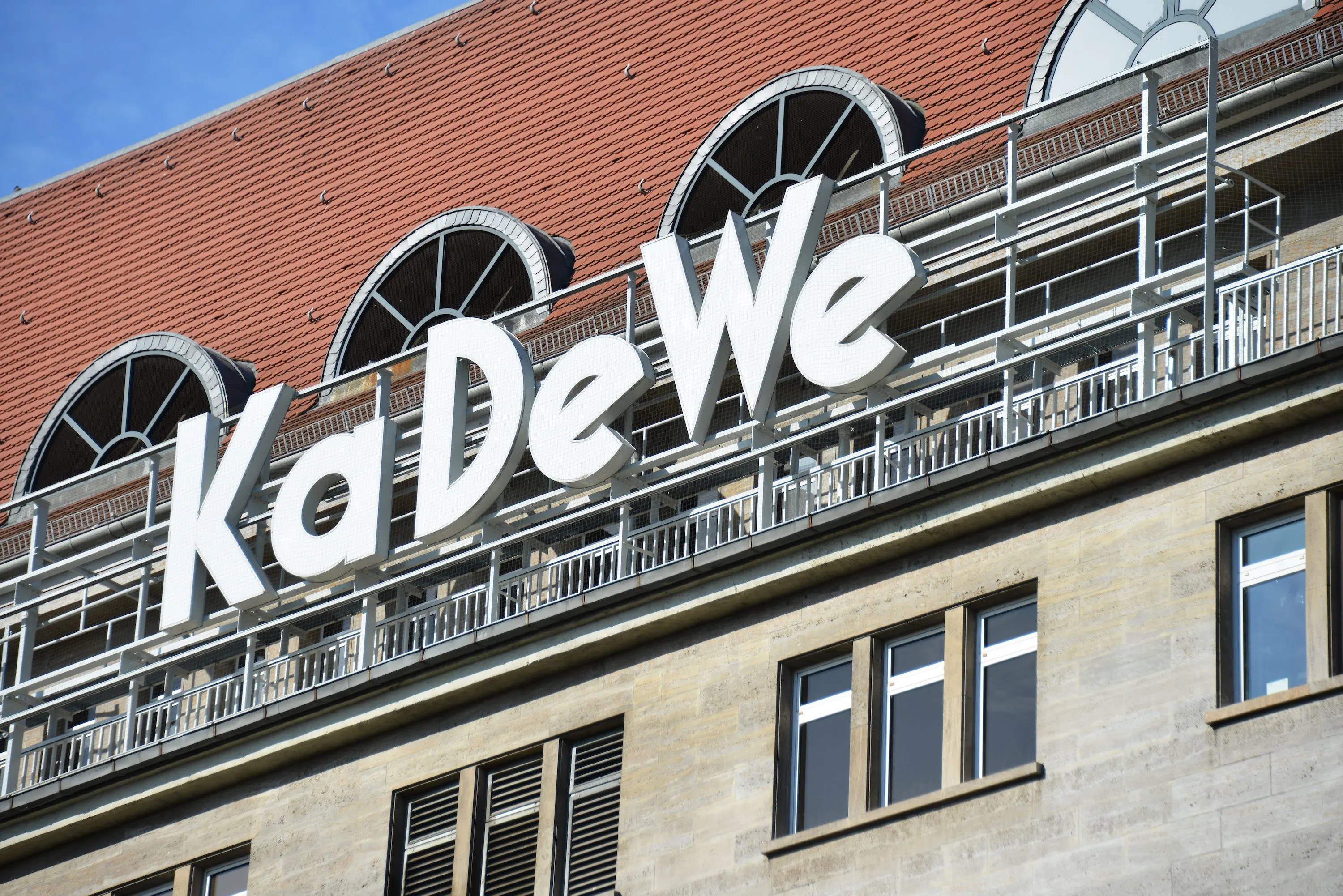
KaDeWe
 Highlight of City West
Highlight of City WestShop in the iconic department store of capitalist West Berlin
Opened in 1907, the Kaufhaus des Westens, or KaDeWe, quickly became a temple of luxury in a rapidly modernising city. It took off again following the German post-war economic miracle and gained new impetus again following German reunification. During Communism, due to it's proximity to East Germany, it became a symbol of the material wealth of the West in comparison to that of countries stuck behind the Iron Curtain.
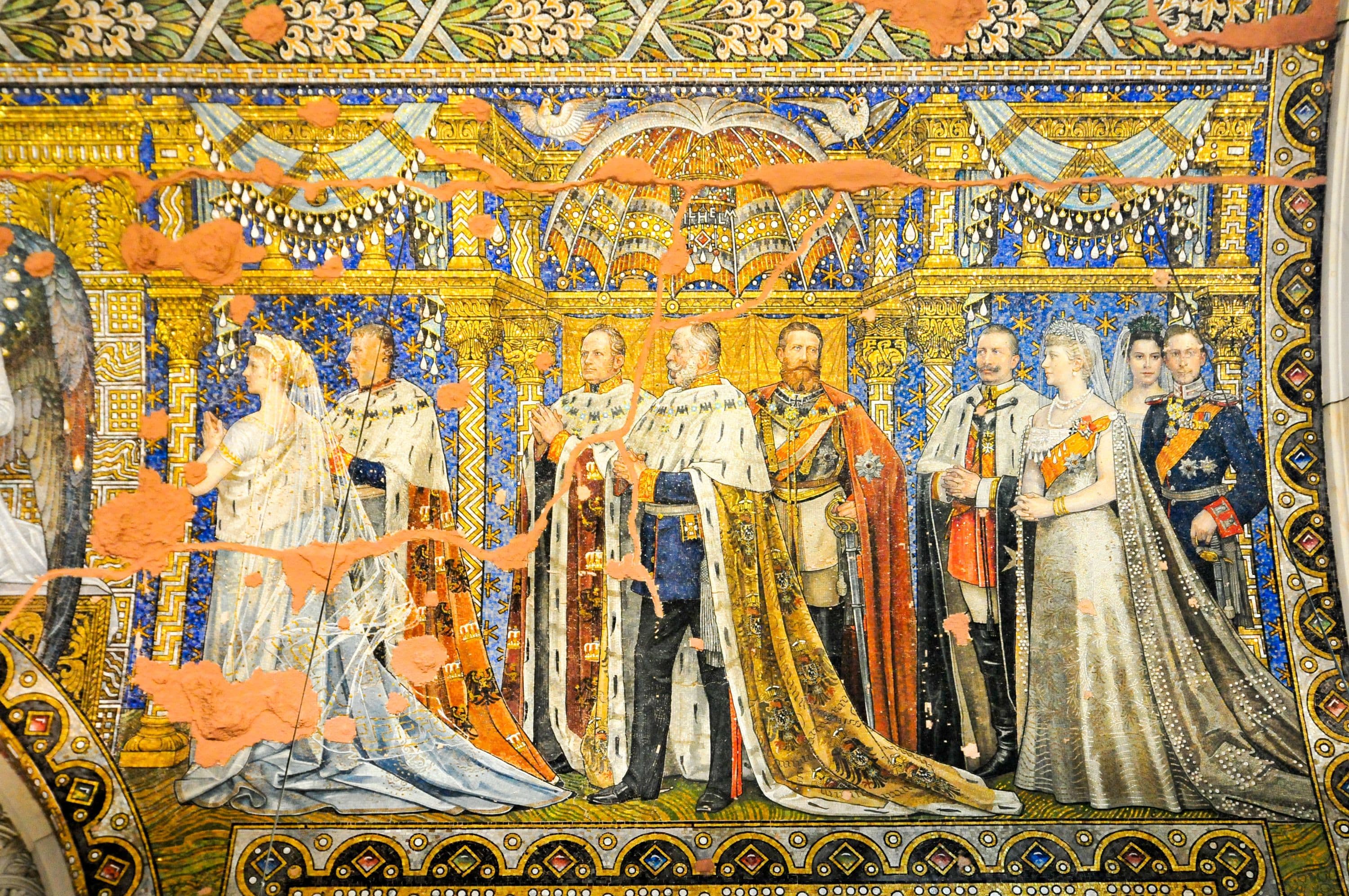
Memorial Church
 Highlight of City West
Highlight of City WestRemind yourself of war's destructiveness by visiting the ruins of this church destroyed during WWII.
After its destruction in WWII, the Kaiser Wilhelm Memorial Church was partially rebuilt in modernist style, and partially left in ruins as a powerful reminder of the war. Built-in the 1890s, Kaiser Wilhelm II hoped to inspire the secular proletariat to return to traditional religious values. The neo-Gothic design became ever more colorful as Wilhelm insisted on more bling. The small exhibition inside shows the wartime destruction and a “before and after” model of the city center.
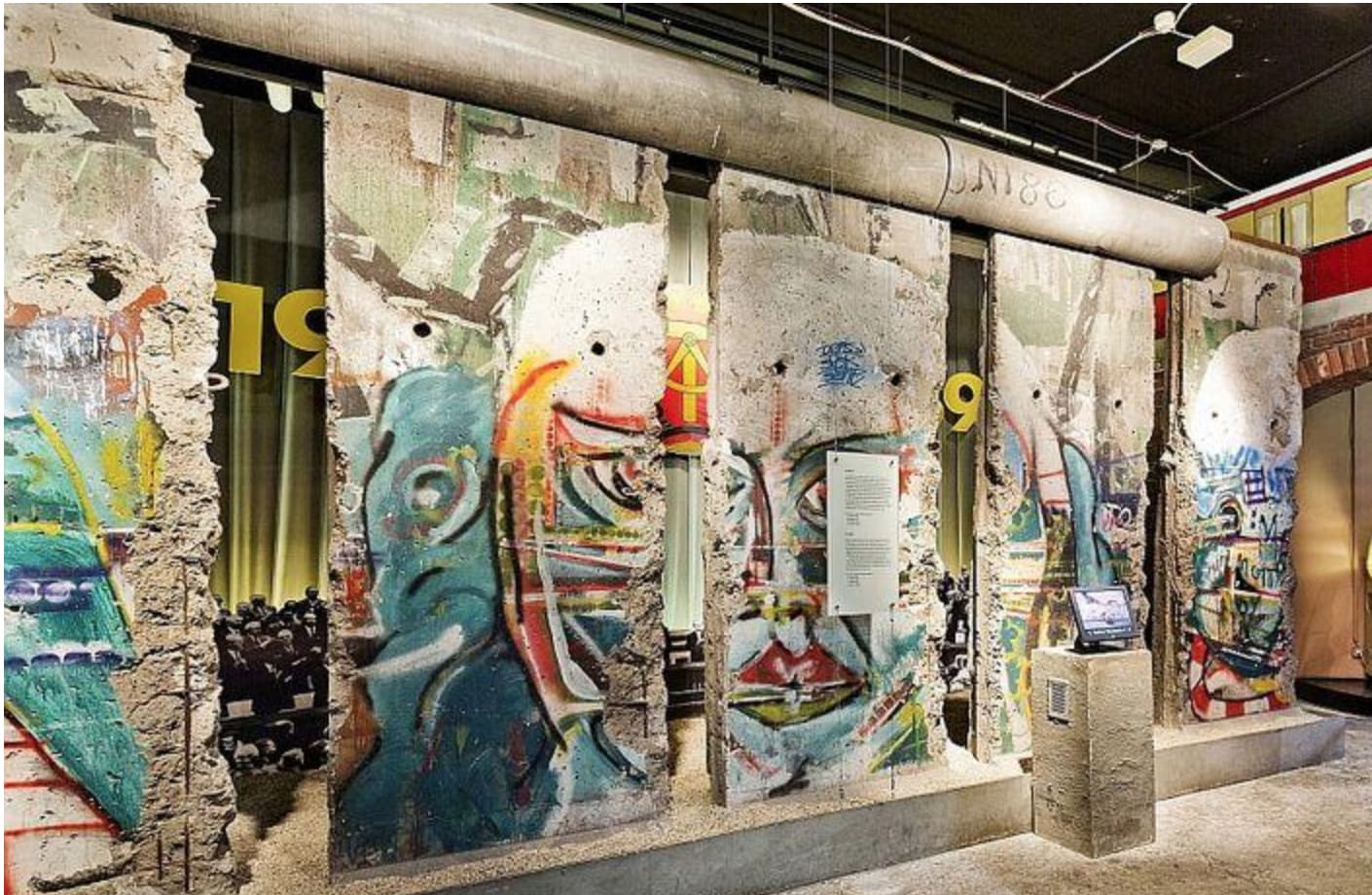
Story of Berlin Museum
 Highlight of City West
Highlight of City WestTake an interactive crash course in Berlin history. (Re-opening Autumn 2021)
This museum uses reconstructed street scapes, homes, and other interactive exibits to give you good feeling for the atmosphere of Berlin during it's long and often times turbulent history, including during the Nazi and Communist era. You can also tour an underground nuclear shelter.

Berlin Zoo
 Highlight of City West
Highlight of City WestVisit Germany's Oldest and Best Known Zoo.
Founded in 1844, the Zoologischer Garten Berlin was the first zoo in Germany and features some wonderful animal-inspired architecture as well. The original animals were donated by King Frederick William IV of Prussia, and it now has a collection of around 20,500 animals representing 1,500 different species. The zoo’s aquarium opened in 1913 and now contains one of the largest collections of aquatic life in Europe.

KaDeWe
 Highlight of City West
Highlight of City WestShop in the iconic department store of capitalist West Berlin
Opened in 1907, the Kaufhaus des Westens, or KaDeWe, quickly became a temple of luxury in a rapidly modernising city. It took off again following the German post-war economic miracle and gained new impetus again following German reunification. During Communism, due to it's proximity to East Germany, it became a symbol of the material wealth of the West in comparison to that of countries stuck behind the Iron Curtain.

Memorial Church
 Highlight of City West
Highlight of City WestRemind yourself of war's destructiveness by visiting the ruins of this church destroyed during WWII.
After its destruction in WWII, the Kaiser Wilhelm Memorial Church was partially rebuilt in modernist style, and partially left in ruins as a powerful reminder of the war. Built-in the 1890s, Kaiser Wilhelm II hoped to inspire the secular proletariat to return to traditional religious values. The neo-Gothic design became ever more colorful as Wilhelm insisted on more bling. The small exhibition inside shows the wartime destruction and a “before and after” model of the city center.

Story of Berlin Museum
 Highlight of City West
Highlight of City WestTake an interactive crash course in Berlin history. (Re-opening Autumn 2021)
This museum uses reconstructed street scapes, homes, and other interactive exibits to give you good feeling for the atmosphere of Berlin during it's long and often times turbulent history, including during the Nazi and Communist era. You can also tour an underground nuclear shelter.
prev
next


Day 4
Prague
View More
Day 4
Prague




9:00 AM - 12:30 PM
Prague Castle & Royal Route Guided Walk
On this charming guided walk, you will explore the Prague Castle, the largest castle complex in all of Europe. To reach the castle you will trace the Royal Coronation Route and cross the Charles Bridge, whose “speaking stones” reveal the amazing and often cruel history that occurred there. Your tour guide will then take you either through the castle courtyards and into the dramatic St. Vitus Cathedral in the center of the castle complex, or through the upper part of the castle district around the oversized palaces of the old Catholic nobility and the top of the Castle Steps for incomparable views over the red rooftops of the Little Quarter.

Charles Bridge
Cross the river dividing Prague's most historic neighborhoods, and experience one of Europe's most iconic landmarks.
Show More

Maltese Square & Lennon Wall
See a historic wall that has been covered in John Lennon-inspired graffiti since Communist days.
Show More

Prague Castle
Prague Castle is one of the main attractions in Prague and is also the largest castle complex in the world.
Show More

Charles Bridge
Cross the river dividing Prague's most historic neighborhoods, and experience one of Europe's most iconic landmarks.
Show More

Maltese Square & Lennon Wall
See a historic wall that has been covered in John Lennon-inspired graffiti since Communist days.
Show More

Prague Castle
Prague Castle is one of the main attractions in Prague and is also the largest castle complex in the world.
Show More

Charles Bridge
Cross the river dividing Prague's most historic neighborhoods, and experience one of Europe's most iconic landmarks.
Show More
prev
next

Day 4
Prague
View More

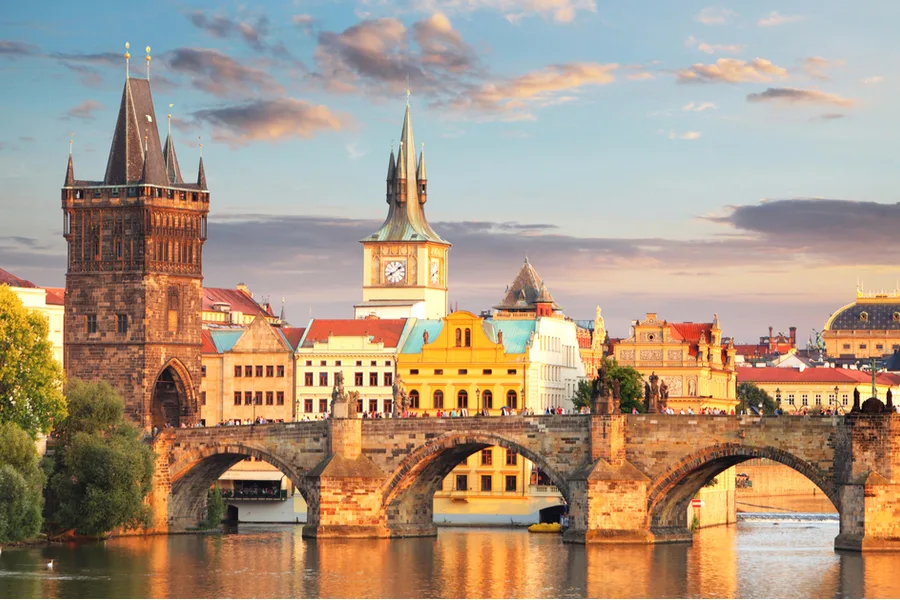
Charles Bridge
 Highlight of Royal Route Guided Tour
Highlight of Royal Route Guided TourCross the river dividing Prague's most historic neighborhoods, and experience one of Europe's most iconic landmarks.
Bridge construction began in 1357 under King Charles IV (hence the name), and it was the only bridge across the Vltava River until 1841. 30 baroque statues of saints line the bridge, and it is filled with street artists and entertainers. Not to be missed.
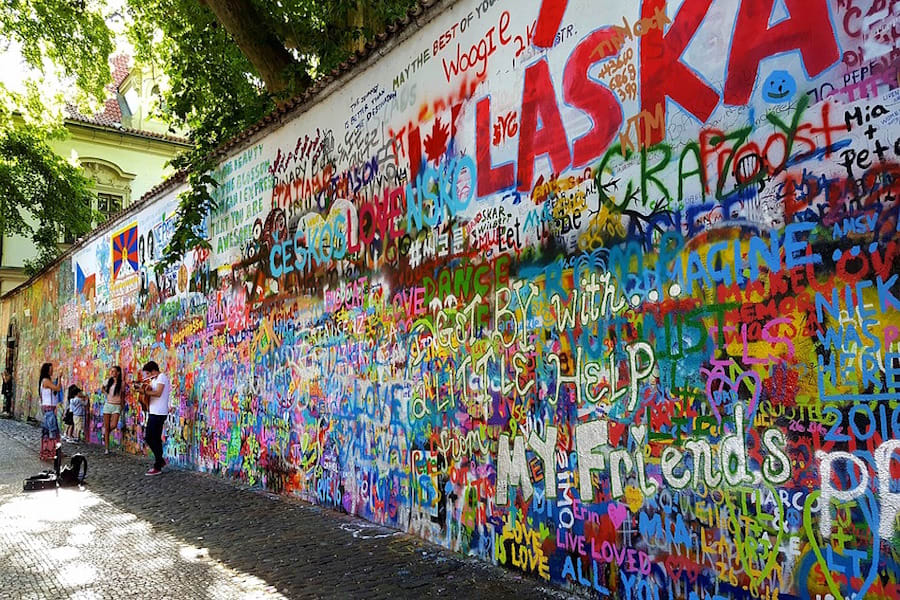
Maltese Square & Lennon Wall
 Highlight of Royal Route Guided Tour
Highlight of Royal Route Guided TourSee a historic wall that has been covered in John Lennon-inspired graffiti since Communist days.
The wall has been covered in graffiti since the 1960s, and during Communism anti-regime sentiment was common. John Lennon's assassination inspired grafitti reflecting his song, Imagine, which earned the wall its current moniker. It is now a favorite gathering place for tourists, and musicians sometimes congregate there as well. Just around the corner is the Maltese Square, which is one of Prague's more quaint and relaxed public spaces, despite being just off the main tourist route.
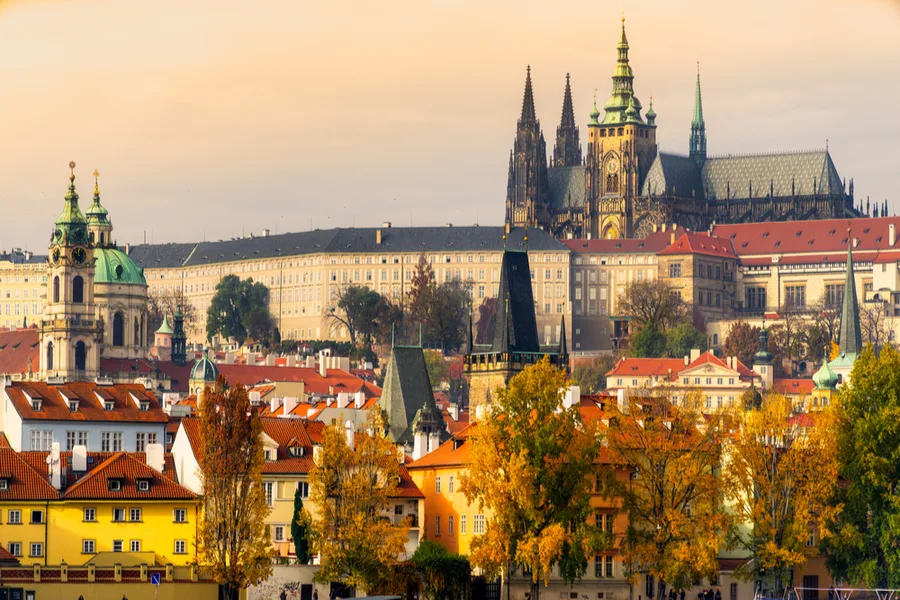
Prague Castle
 Highlight of Royal Route Guided Tour
Highlight of Royal Route Guided TourPrague Castle is one of the main attractions in Prague and is also the largest castle complex in the world.
The Prague Castle is the largest castle complex in the world with structures dating back to the 9th century. The St Vitus Cathedral and Basilica of St George can be found within the castle walls. The Prague Castle also includes several gardens, palaces, and a monastery. This castle was the seat of power for the Kings of Bohemia, Holy Roman Emperors, and presidents of former Czechoslovakia. Prague Castle is a UNESCO world heritage site and is one of the most visited places in the country.

Charles Bridge
 Highlight of Royal Route Guided Tour
Highlight of Royal Route Guided TourCross the river dividing Prague's most historic neighborhoods, and experience one of Europe's most iconic landmarks.
Bridge construction began in 1357 under King Charles IV (hence the name), and it was the only bridge across the Vltava River until 1841. 30 baroque statues of saints line the bridge, and it is filled with street artists and entertainers. Not to be missed.

Maltese Square & Lennon Wall
 Highlight of Royal Route Guided Tour
Highlight of Royal Route Guided TourSee a historic wall that has been covered in John Lennon-inspired graffiti since Communist days.
The wall has been covered in graffiti since the 1960s, and during Communism anti-regime sentiment was common. John Lennon's assassination inspired grafitti reflecting his song, Imagine, which earned the wall its current moniker. It is now a favorite gathering place for tourists, and musicians sometimes congregate there as well. Just around the corner is the Maltese Square, which is one of Prague's more quaint and relaxed public spaces, despite being just off the main tourist route.

Prague Castle
 Highlight of Royal Route Guided Tour
Highlight of Royal Route Guided TourPrague Castle is one of the main attractions in Prague and is also the largest castle complex in the world.
The Prague Castle is the largest castle complex in the world with structures dating back to the 9th century. The St Vitus Cathedral and Basilica of St George can be found within the castle walls. The Prague Castle also includes several gardens, palaces, and a monastery. This castle was the seat of power for the Kings of Bohemia, Holy Roman Emperors, and presidents of former Czechoslovakia. Prague Castle is a UNESCO world heritage site and is one of the most visited places in the country.

Charles Bridge
 Highlight of Royal Route Guided Tour
Highlight of Royal Route Guided TourCross the river dividing Prague's most historic neighborhoods, and experience one of Europe's most iconic landmarks.
Bridge construction began in 1357 under King Charles IV (hence the name), and it was the only bridge across the Vltava River until 1841. 30 baroque statues of saints line the bridge, and it is filled with street artists and entertainers. Not to be missed.
prev
next


Day 5
Prague
View More
Day 5
Prague




Morning
Discover the New Town
Despite being 700 years old, the New Town (Nové Město) is the youngest of the original five independent towns that made up Medieval Prague. The heart of New Town is one of the three original markets around which the town was planned, Wenceslas Square. Not fully given over to tourism like the Old Town, the New Town combines a historic atmosphere with the daily commercial and social life of locals, making it a great place to get a taste of the real Prague.

Dancing House
Stroll down the river to find this curvaceous office block designed by Frank Gehry, and whi msically nicknamed Fred & Ginger.
Show More

National Theater
Experience nationally-sponsored ballet & opera in a magnificent venue.
Show More

National Museum
Explore an interesting museum collection in a grand building completed in 1891.
Show More

Wenceslas Square
Experience a mishmash of interesting architecture on Wenceslas Square, Prague's main commercial center.
Show More

Municipal House
Tour a breathtaking art nouveau venue and stay for a concert, opera, or ballet.
Show More

Dancing House
Stroll down the river to find this curvaceous office block designed by Frank Gehry, and whi msically nicknamed Fred & Ginger.
Show More

National Theater
Experience nationally-sponsored ballet & opera in a magnificent venue.
Show More

National Museum
Explore an interesting museum collection in a grand building completed in 1891.
Show More

Wenceslas Square
Experience a mishmash of interesting architecture on Wenceslas Square, Prague's main commercial center.
Show More

Municipal House
Tour a breathtaking art nouveau venue and stay for a concert, opera, or ballet.
Show More

Dancing House
Stroll down the river to find this curvaceous office block designed by Frank Gehry, and whi msically nicknamed Fred & Ginger.
Show More
prev
next

Day 5
Prague
View More

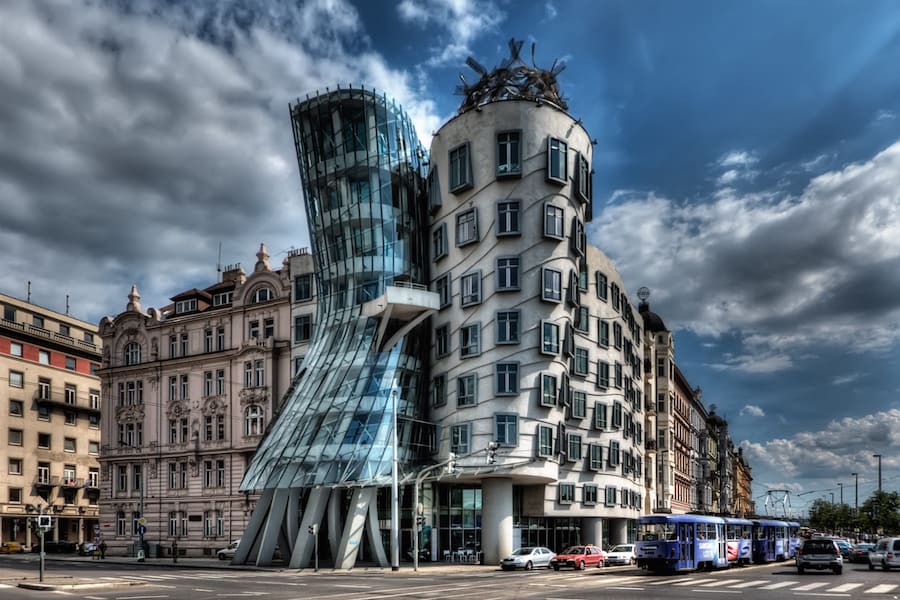
Dancing House
 Highlight of New Town
Highlight of New TownStroll down the river to find this curvaceous office block designed by Frank Gehry, and whi msically nicknamed Fred & Ginger.
There is no tour of the interior, so most visitors just snap a photo and head out. However, there is a restaurant and bar at the top called Ginger&Fred. For a spectacular view of the city check out the terrace on the top floor (only for paying customers).
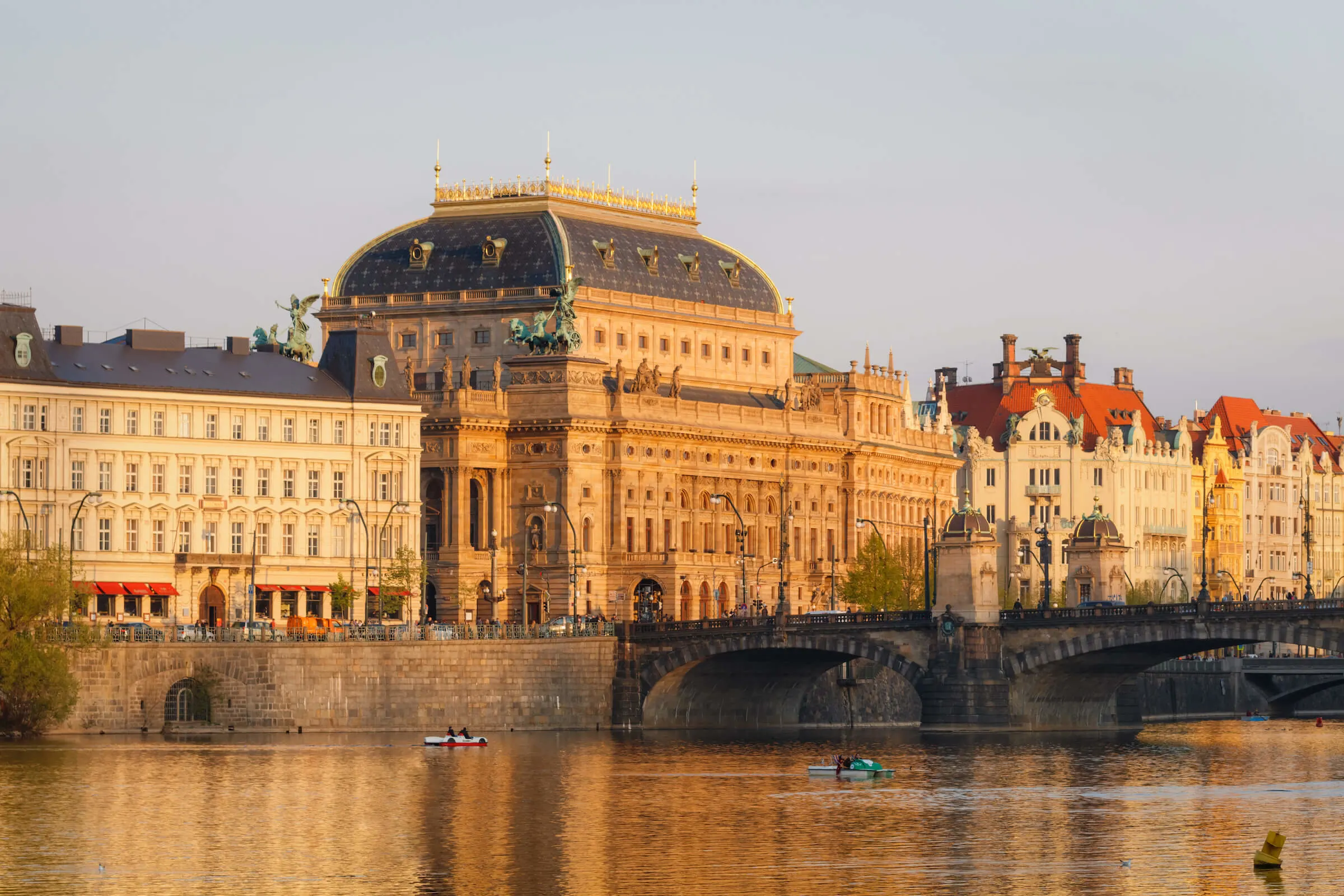
National Theater
 Highlight of New Town
Highlight of New TownExperience nationally-sponsored ballet & opera in a magnificent venue.
This concert hall is Prague's most prestigious, and it is not only a symbol of the 19th century Czech national revival but also arguably one of the most beautiful concert venues in Europe. Unfortunately, tours are not regularly offered, but you may attend an opera or ballet if you purchase tickets in advance. The riverfront near the concert hall is one of the most photographed spots in Prague.
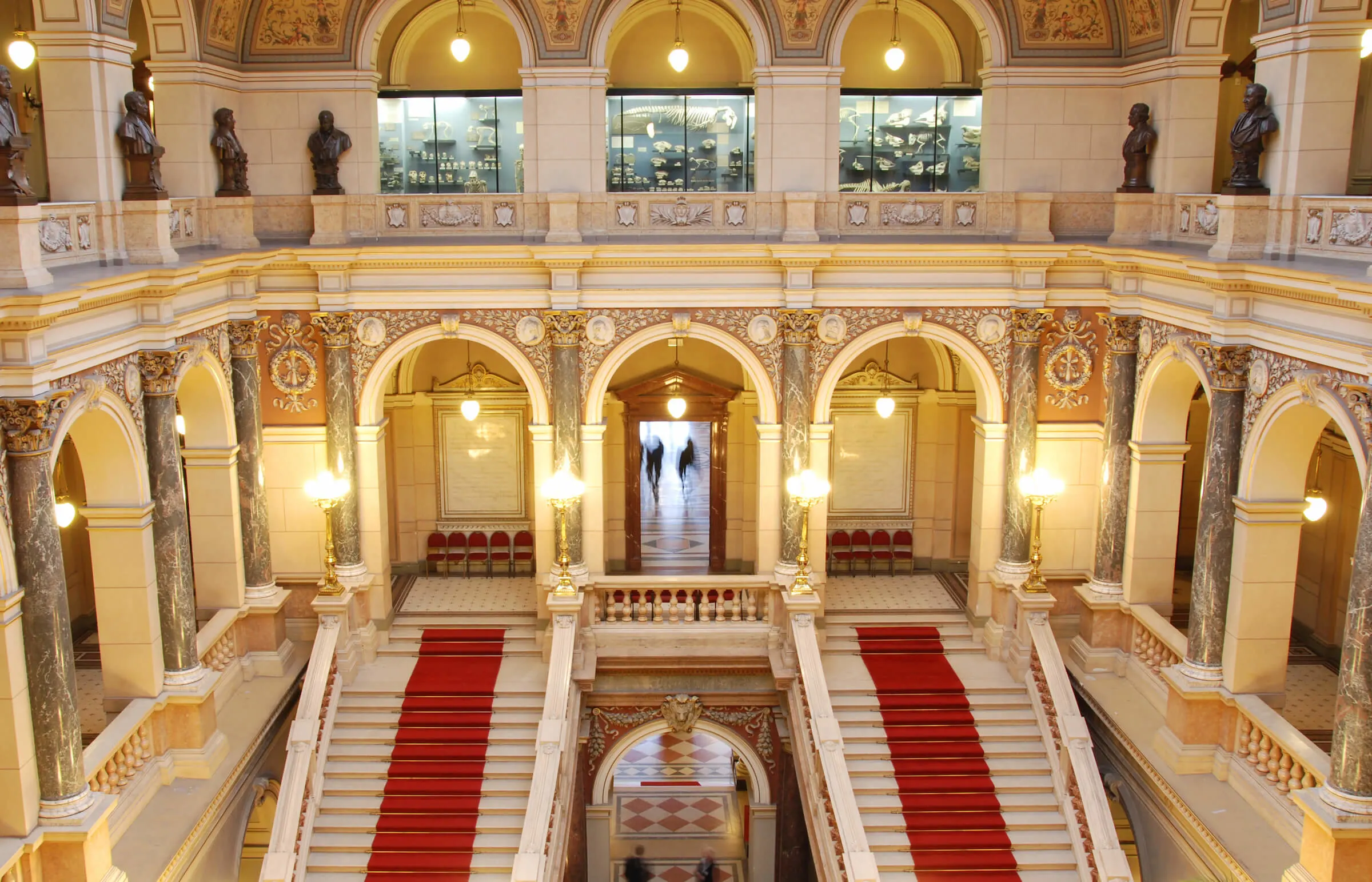
National Museum
 Highlight of New Town
Highlight of New TownExplore an interesting museum collection in a grand building completed in 1891.
The recently renovated and improved National Museum is fronted by the iconic equestrian statue of "good king Wenceslas". Beyond it's dramatic exterior you'll find a grand staircase which is a highlight of any visit. Founded in 1818, the museum played a major role in bringing natural science and history to the common man, and also played an important part in the Czech national revival occurring in the 19th century.
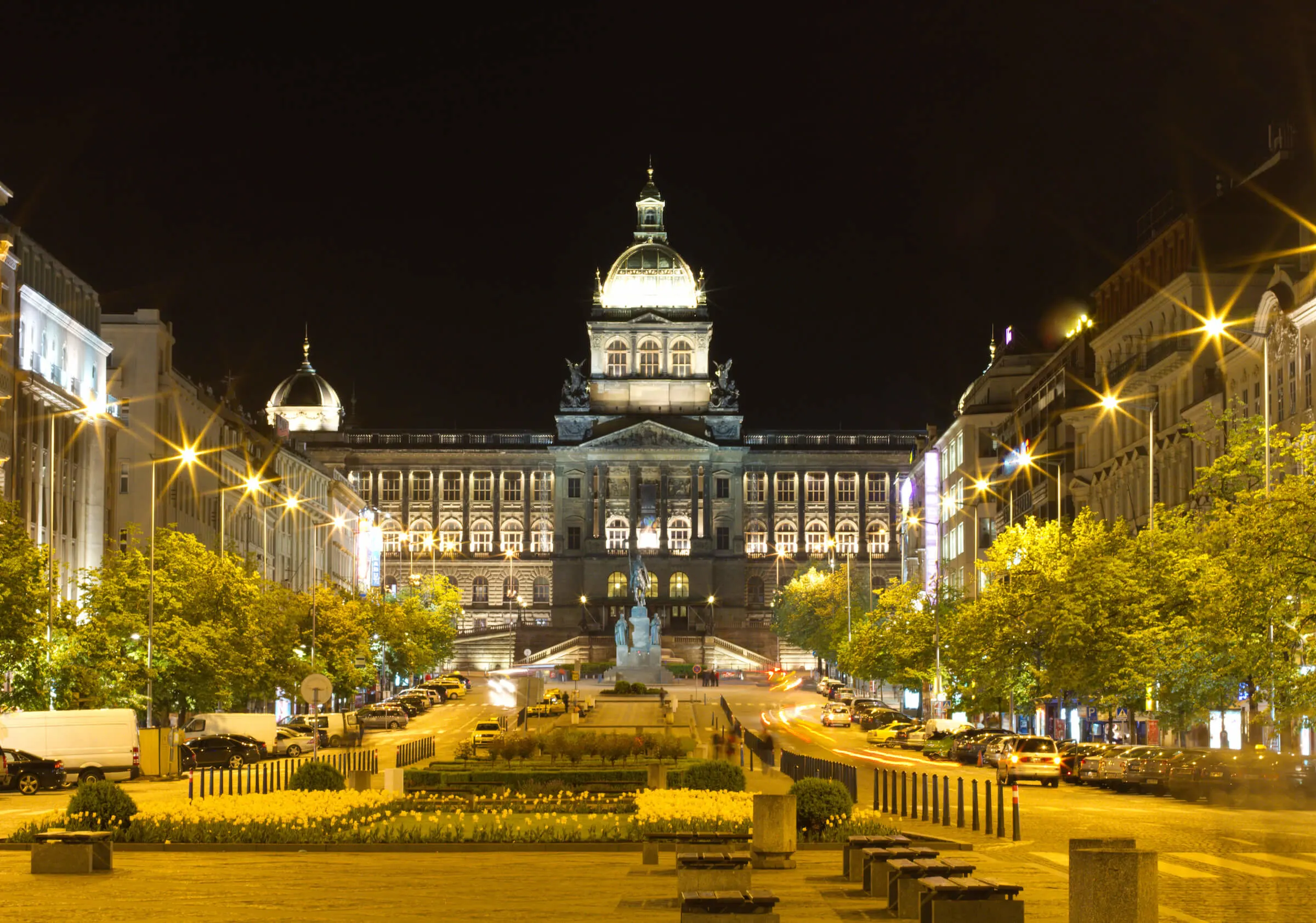
Wenceslas Square
 Highlight of New Town
Highlight of New TownExperience a mishmash of interesting architecture on Wenceslas Square, Prague's main commercial center.
The square, which could also be described as a wide boulevard, is named after the Patron Saint of Bohemia, whose statue can be seen at the top of the square. Many historical events have taken place here, including the demonstrations of the Velvet Revolution in 1989, which resulted in the collapse of the Communist regime. Today the square is lined by department stores, hotels, and office buildings, many of them notable architectural highlights of the 19th, 20th, and 21st century.
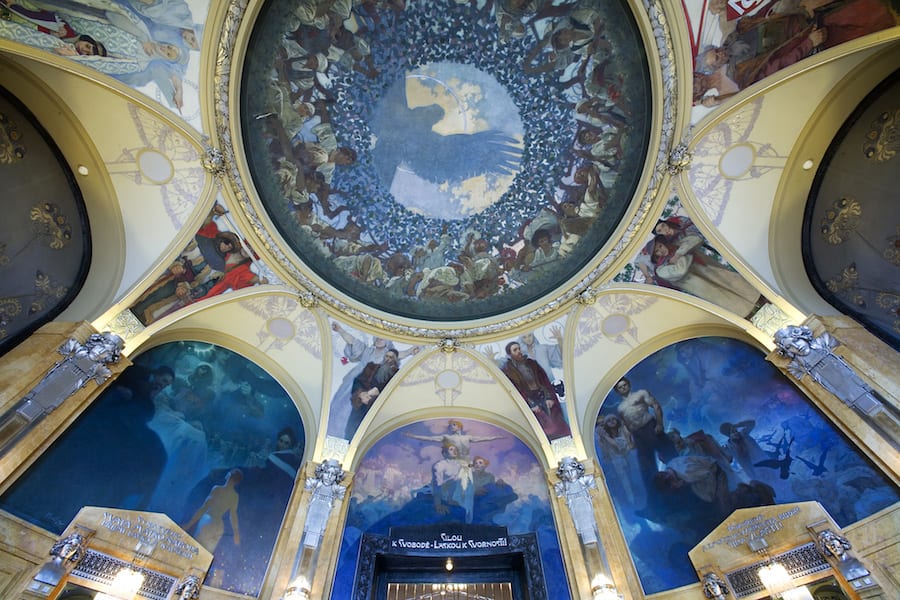
Municipal House
 Highlight of New Town
Highlight of New TownTour a breathtaking art nouveau venue and stay for a concert, opera, or ballet.
The stunning concert hall is open for tours and hosts performances on most evenings. The main hall is painted by famous Czech artists including Alfons Mucha. A beautiful cafe and restaurant are also housed in the building, and you can find one of Prague's most ornate pubs in the cellar (the "American Bar").

Dancing House
 Highlight of New Town
Highlight of New TownStroll down the river to find this curvaceous office block designed by Frank Gehry, and whi msically nicknamed Fred & Ginger.
There is no tour of the interior, so most visitors just snap a photo and head out. However, there is a restaurant and bar at the top called Ginger&Fred. For a spectacular view of the city check out the terrace on the top floor (only for paying customers).

National Theater
 Highlight of New Town
Highlight of New TownExperience nationally-sponsored ballet & opera in a magnificent venue.
This concert hall is Prague's most prestigious, and it is not only a symbol of the 19th century Czech national revival but also arguably one of the most beautiful concert venues in Europe. Unfortunately, tours are not regularly offered, but you may attend an opera or ballet if you purchase tickets in advance. The riverfront near the concert hall is one of the most photographed spots in Prague.

National Museum
 Highlight of New Town
Highlight of New TownExplore an interesting museum collection in a grand building completed in 1891.
The recently renovated and improved National Museum is fronted by the iconic equestrian statue of "good king Wenceslas". Beyond it's dramatic exterior you'll find a grand staircase which is a highlight of any visit. Founded in 1818, the museum played a major role in bringing natural science and history to the common man, and also played an important part in the Czech national revival occurring in the 19th century.

Wenceslas Square
 Highlight of New Town
Highlight of New TownExperience a mishmash of interesting architecture on Wenceslas Square, Prague's main commercial center.
The square, which could also be described as a wide boulevard, is named after the Patron Saint of Bohemia, whose statue can be seen at the top of the square. Many historical events have taken place here, including the demonstrations of the Velvet Revolution in 1989, which resulted in the collapse of the Communist regime. Today the square is lined by department stores, hotels, and office buildings, many of them notable architectural highlights of the 19th, 20th, and 21st century.

Municipal House
 Highlight of New Town
Highlight of New TownTour a breathtaking art nouveau venue and stay for a concert, opera, or ballet.
The stunning concert hall is open for tours and hosts performances on most evenings. The main hall is painted by famous Czech artists including Alfons Mucha. A beautiful cafe and restaurant are also housed in the building, and you can find one of Prague's most ornate pubs in the cellar (the "American Bar").

Dancing House
 Highlight of New Town
Highlight of New TownStroll down the river to find this curvaceous office block designed by Frank Gehry, and whi msically nicknamed Fred & Ginger.
There is no tour of the interior, so most visitors just snap a photo and head out. However, there is a restaurant and bar at the top called Ginger&Fred. For a spectacular view of the city check out the terrace on the top floor (only for paying customers).
prev
next


Day 6
Prague to Vienna
View More
Day 6
Prague to Vienna





Morning
Vyšehrad Fortress; a Favorite of the Locals
The castle of Vyšehrad was the seat of Bohemia's kings from the 11th to the 12th centuries. Due to its strategic position on a hill overlooking the Vltava River and Prague, it became an important army garrison in the 17th century, and it was transformed into a fortress with huge walls, gates, and ramparts. Walking along these ramparts will offer you wonderful views of the city and river. The interior of the fortress is now given over to a pleasant and quiet park which is a favorite of locals.

Vyšehrad Cemetery
Wander in a graveyard where many prominent Czechs are buried, such as famed composers Dvořák & Smětana.
Show More

Fortress Walls Viewpoint
Enjoy stunning city views from atop the fortress walls.
Show More

Brick Gate and Casemates
Venture within the fortress's massive 17th-century walls and gates.
Show More

Vyšehrad Cemetery
Wander in a graveyard where many prominent Czechs are buried, such as famed composers Dvořák & Smětana.
Show More

Fortress Walls Viewpoint
Enjoy stunning city views from atop the fortress walls.
Show More

Brick Gate and Casemates
Venture within the fortress's massive 17th-century walls and gates.
Show More

Vyšehrad Cemetery
Wander in a graveyard where many prominent Czechs are buried, such as famed composers Dvořák & Smětana.
Show More
prev
next

Day 6
Prague to Vienna
View More

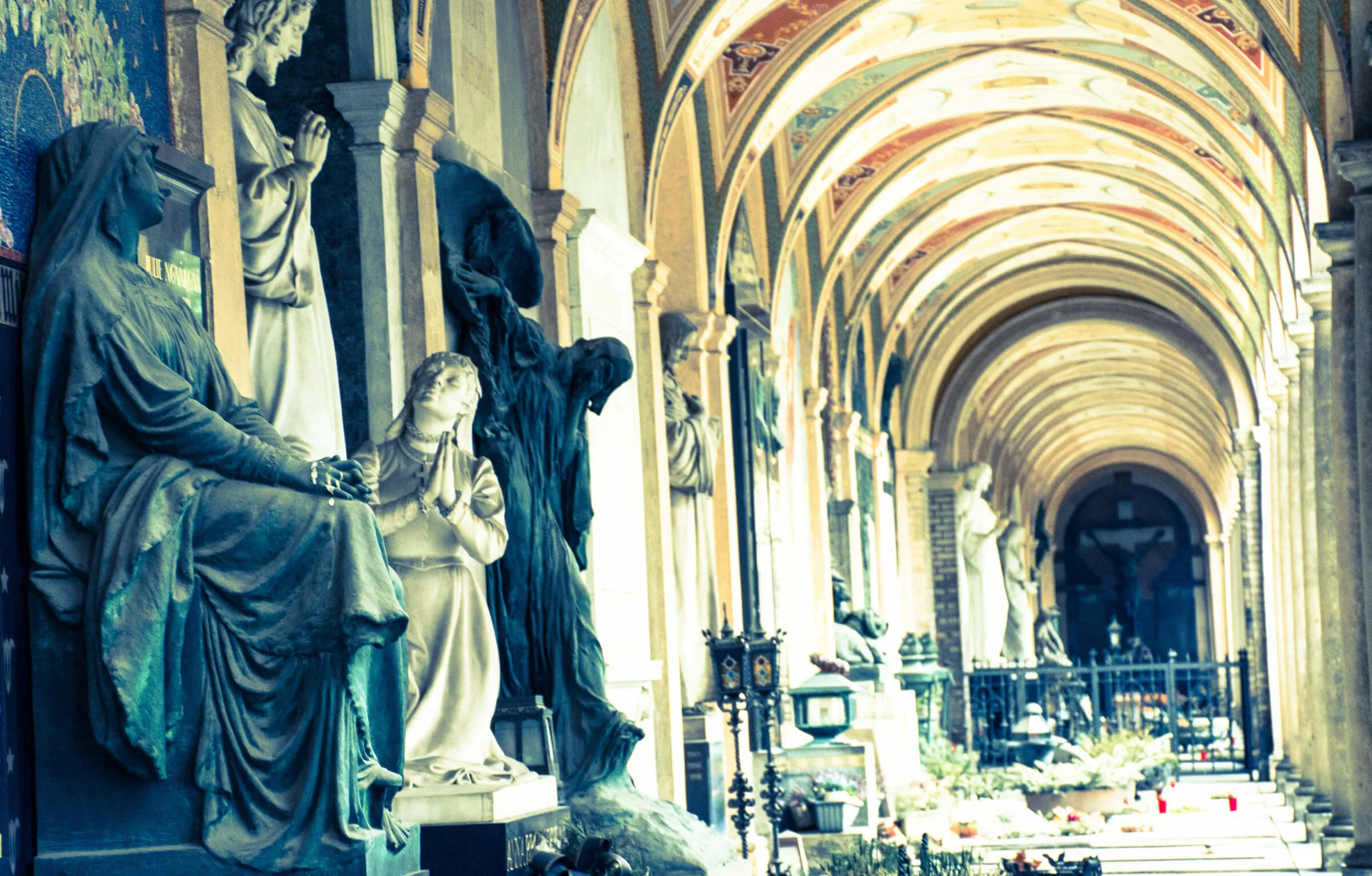
Vyšehrad Cemetery
 Highlight of Vyšehrad Fortress
Highlight of Vyšehrad FortressWander in a graveyard where many prominent Czechs are buried, such as famed composers Dvořák & Smětana.
The cemetery is filled with many tombs which are works of art in themselves, including several arcades with beautiful art-nouveau frescoes. The monumental Slavin tomb is a sort of pantheon of the Czech people, with over 55 prominent persons buried within it. Dvořák and Smětana have their own more modest graves.

Fortress Walls Viewpoint
 Highlight of Vyšehrad Fortress
Highlight of Vyšehrad FortressEnjoy stunning city views from atop the fortress walls.
Prague Castle and most of the city can be seen from above the cavernous Gorlice Hall. A walk along the fortress walls is a delightful experience, as you will enjoy numerous excellent vantage points on all sides of the fortress, enjoying Prague from a different perspective without all the crowds.
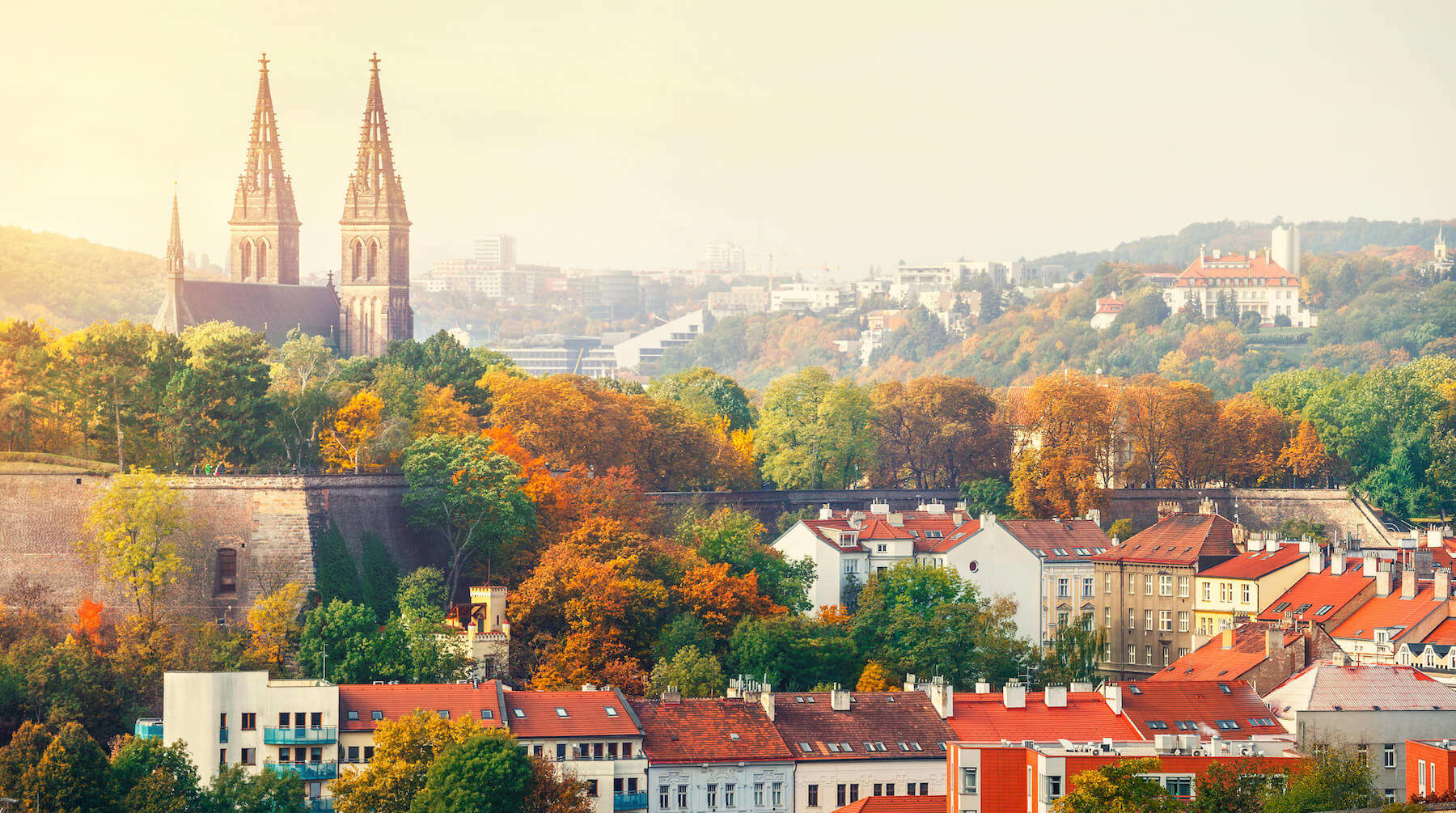
Brick Gate and Casemates
 Highlight of Vyšehrad Fortress
Highlight of Vyšehrad FortressVenture within the fortress's massive 17th-century walls and gates.
A tour through the Brick Gate on the fortress's north side will take you through the narrow underground passageways and casemates of the fortress. You will see a historical exhibit on Vyšehrad as well as the underground Gorlice Hall, where the original statues from the Charles Bridge are stored for safe-keeping (many of the statues on the bridge are copies).

Vyšehrad Cemetery
 Highlight of Vyšehrad Fortress
Highlight of Vyšehrad FortressWander in a graveyard where many prominent Czechs are buried, such as famed composers Dvořák & Smětana.
The cemetery is filled with many tombs which are works of art in themselves, including several arcades with beautiful art-nouveau frescoes. The monumental Slavin tomb is a sort of pantheon of the Czech people, with over 55 prominent persons buried within it. Dvořák and Smětana have their own more modest graves.

Fortress Walls Viewpoint
 Highlight of Vyšehrad Fortress
Highlight of Vyšehrad FortressEnjoy stunning city views from atop the fortress walls.
Prague Castle and most of the city can be seen from above the cavernous Gorlice Hall. A walk along the fortress walls is a delightful experience, as you will enjoy numerous excellent vantage points on all sides of the fortress, enjoying Prague from a different perspective without all the crowds.

Brick Gate and Casemates
 Highlight of Vyšehrad Fortress
Highlight of Vyšehrad FortressVenture within the fortress's massive 17th-century walls and gates.
A tour through the Brick Gate on the fortress's north side will take you through the narrow underground passageways and casemates of the fortress. You will see a historical exhibit on Vyšehrad as well as the underground Gorlice Hall, where the original statues from the Charles Bridge are stored for safe-keeping (many of the statues on the bridge are copies).

Vyšehrad Cemetery
 Highlight of Vyšehrad Fortress
Highlight of Vyšehrad FortressWander in a graveyard where many prominent Czechs are buried, such as famed composers Dvořák & Smětana.
The cemetery is filled with many tombs which are works of art in themselves, including several arcades with beautiful art-nouveau frescoes. The monumental Slavin tomb is a sort of pantheon of the Czech people, with over 55 prominent persons buried within it. Dvořák and Smětana have their own more modest graves.
prev
next


Day 7
Vienna
View More
Day 7
Vienna




9:00 AM - 11:30 AM
Guided Walk through Vienna's Inner City
This tour takes you back in history to explore the Vienna that stood within the old city walls. You will learn about the humble beginnings of Vienna before it became the capital of a great empire and one of the most important cities in Europe. You will discover how Vienna's early inhabitants lived and how they left their mark on the city and its beautiful Medieval, Renaissance, and Baroque architecture.

Day 7
Vienna
View More


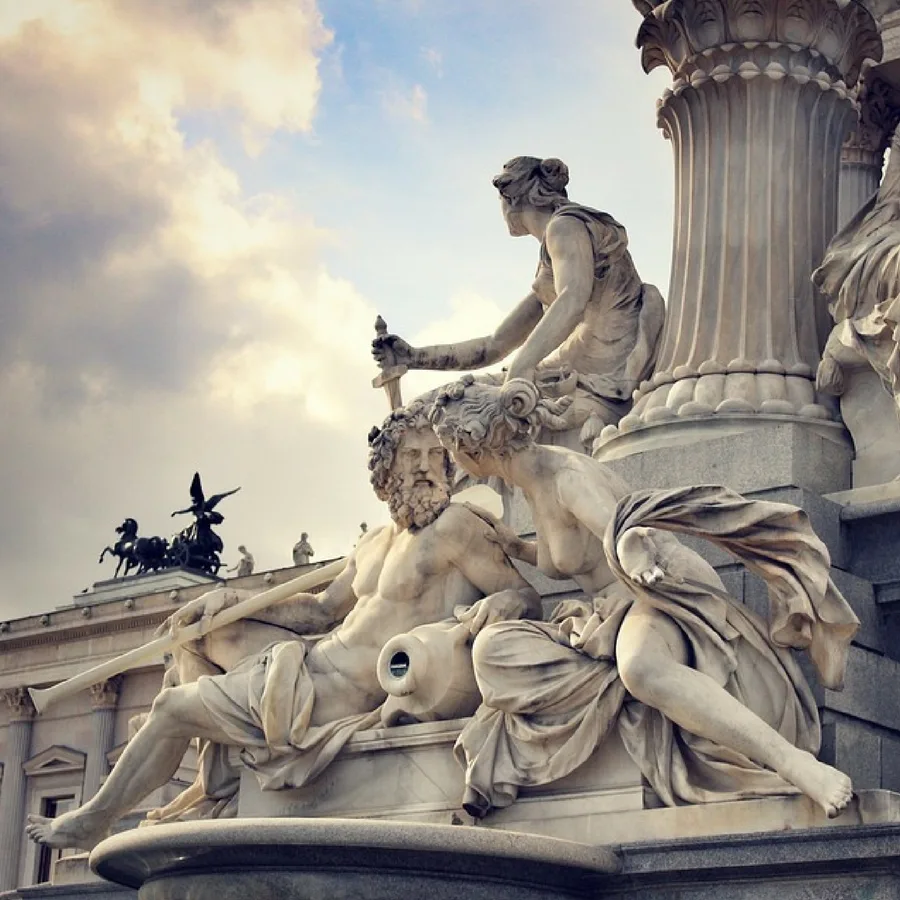
Day 8
Vienna to Budapest
View More
Day 8
Vienna to Budapest





Morning
Tour the Schönbrunn Palace
The magnificent Baroque palace of Schönbrunn is most famously associated with Empress Maria Theresa, who lived here surrounded by 16 little archdukes and duchesses who also happened to be her children. On your tour of the palace, you will see how Maria Theresa and other past imperial residents lived. No visit is complete without a stroll in the vast gardens surrounding the palace.

Schönbrunn Zoo
Join local families enjoying one of Europe's best zoos.
Show More

Schönbrunn Gardens
Get lost in the huge imperial gardens.
Show More

Schönbrunn Zoo
Join local families enjoying one of Europe's best zoos.
Show More

Schönbrunn Gardens
Get lost in the huge imperial gardens.
Show More

Schönbrunn Zoo
Join local families enjoying one of Europe's best zoos.
Show More

Schönbrunn Gardens
Get lost in the huge imperial gardens.
Show More
prev
next

Day 8
Vienna to Budapest
View More


Schönbrunn Zoo
 Highlight of Schönbrunn Palace
Highlight of Schönbrunn PalaceJoin local families enjoying one of Europe's best zoos.
With an entrance directly connected to the Schönbrunn palace gardens, visiting the zoo can be a great addition to any trip to the palace. Founded as an imperial menagerie in 1752, it is the oldest continually operated zoo in the world, and today is home to many rare species such as giant pandas.
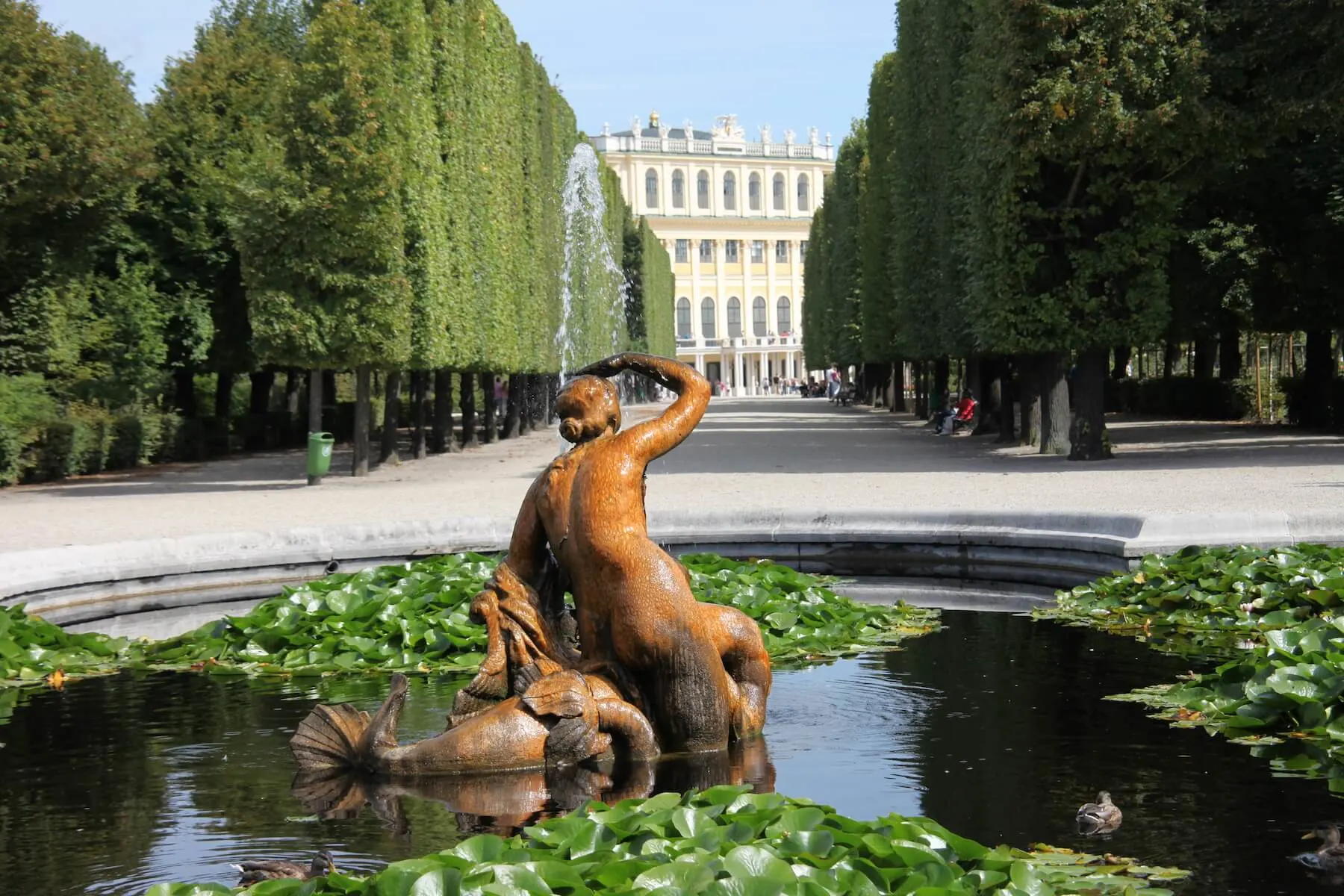
Schönbrunn Gardens
 Highlight of Schönbrunn Palace
Highlight of Schönbrunn PalaceGet lost in the huge imperial gardens.
The beautiful park is a mix of formal gardens and woodlands, and is dotted with enchanting statues & fountains, including a massive fountain of Neptune. The Gloriette pavilion sits on a rise opposite the palace and commands a wonderful view. Kids will love the labyrinth, racing to find the tower at the center of the maze.

Schönbrunn Zoo
 Highlight of Schönbrunn Palace
Highlight of Schönbrunn PalaceJoin local families enjoying one of Europe's best zoos.
With an entrance directly connected to the Schönbrunn palace gardens, visiting the zoo can be a great addition to any trip to the palace. Founded as an imperial menagerie in 1752, it is the oldest continually operated zoo in the world, and today is home to many rare species such as giant pandas.

Schönbrunn Gardens
 Highlight of Schönbrunn Palace
Highlight of Schönbrunn PalaceGet lost in the huge imperial gardens.
The beautiful park is a mix of formal gardens and woodlands, and is dotted with enchanting statues & fountains, including a massive fountain of Neptune. The Gloriette pavilion sits on a rise opposite the palace and commands a wonderful view. Kids will love the labyrinth, racing to find the tower at the center of the maze.

Schönbrunn Zoo
 Highlight of Schönbrunn Palace
Highlight of Schönbrunn PalaceJoin local families enjoying one of Europe's best zoos.
With an entrance directly connected to the Schönbrunn palace gardens, visiting the zoo can be a great addition to any trip to the palace. Founded as an imperial menagerie in 1752, it is the oldest continually operated zoo in the world, and today is home to many rare species such as giant pandas.

Schönbrunn Gardens
 Highlight of Schönbrunn Palace
Highlight of Schönbrunn PalaceGet lost in the huge imperial gardens.
The beautiful park is a mix of formal gardens and woodlands, and is dotted with enchanting statues & fountains, including a massive fountain of Neptune. The Gloriette pavilion sits on a rise opposite the palace and commands a wonderful view. Kids will love the labyrinth, racing to find the tower at the center of the maze.
prev
next

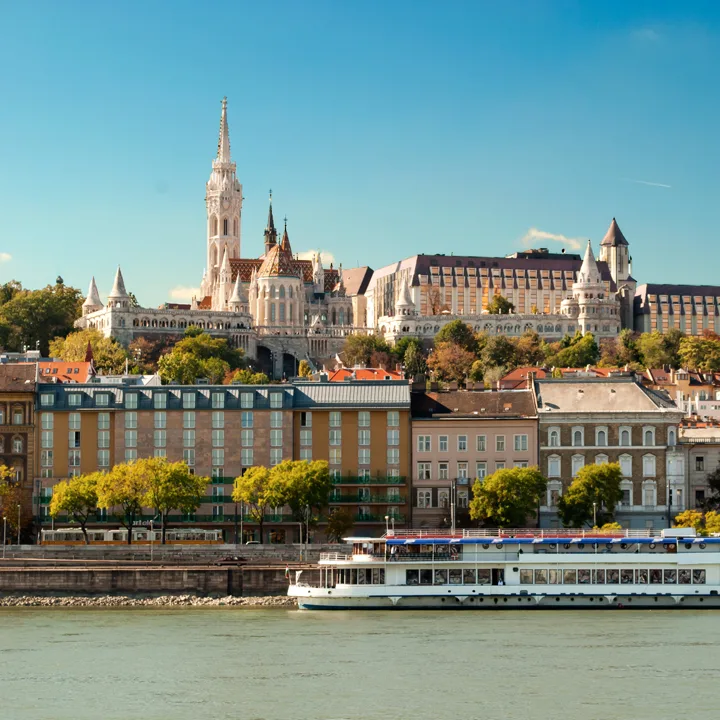
Day 9
Budapest
View More
Day 9
Budapest




9:00 AM - 12:30 PM
Best of Budapest: Half-Day Walking Tour of Highlights & Hidden Finds
During your tour you will take in a gorgeous vista of the city from the Fisherman's Bastion, explore the winding streets of the Castle District, gaze in awe at the striking interior of St. Stephen's Basilica, travel along the city's most elegant avenue and more. Along the way you will experience the city as a local does, stopping to check out intimate courtyards, enjoying a pastry and soaking in the ambiance of Budapest's most elegant cafes.

Day 9
Budapest
View More



Day 10
Budapest
View More
Day 10
Budapest




Morning/Mid-Day
Andrássy Avenue & the State Opera House
The wide, tree-lined Andrássy Avenue is Budapest's most prominent street, and is lined by imposing neo-Renaissance palaces and buildings. It is home to the breathtakingly beautiful State Opera House, making it the musical heart of Hungary. You will also find the superb House of Terror museum, which focuses on the horrors inflicted by 20th century totalitarian regimes.

State Opera House & Opera Metro Station
Experience an unforgettable visit to the incredibly lavish neo-Renaissance Hungarian State Opera House.
Show More

House of Terror Museum
Experience a chilling museum documenting the terrors of Fascism & Communism in Hungary .
Show More

State Opera House & Opera Metro Station
Experience an unforgettable visit to the incredibly lavish neo-Renaissance Hungarian State Opera House.
Show More

House of Terror Museum
Experience a chilling museum documenting the terrors of Fascism & Communism in Hungary .
Show More

State Opera House & Opera Metro Station
Experience an unforgettable visit to the incredibly lavish neo-Renaissance Hungarian State Opera House.
Show More

House of Terror Museum
Experience a chilling museum documenting the terrors of Fascism & Communism in Hungary .
Show More
prev
next

Day 10
Budapest
View More

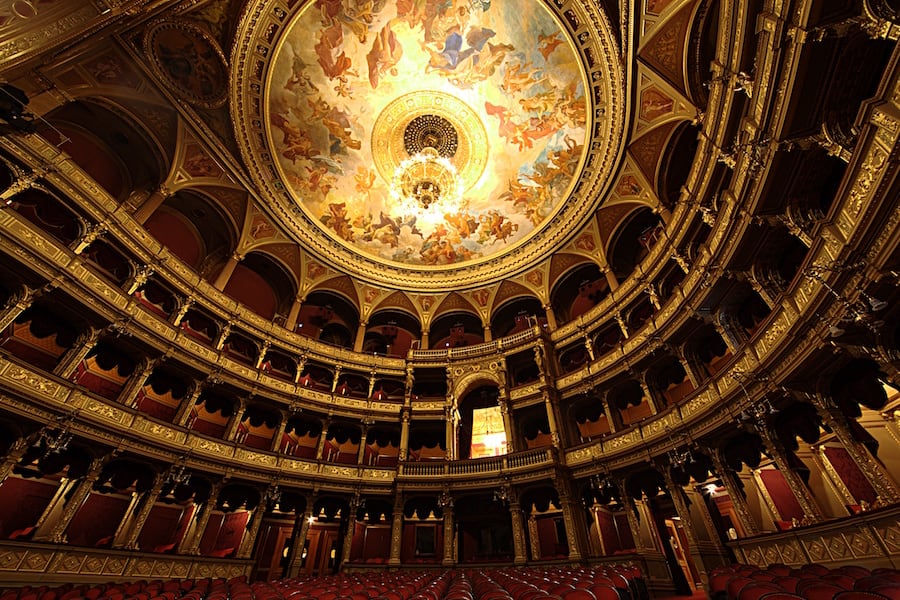
State Opera House & Opera Metro Station
 Highlight of Andrássy Avenue
Highlight of Andrássy AvenueExperience an unforgettable visit to the incredibly lavish neo-Renaissance Hungarian State Opera House.
The Opera House is a symbol of the Hungarian nation and is one of it's most beautiful buildings. It is among the world's finest venues in terms of beauty and acoustics. When completed in 1886, the Austro-Hungarian Emperor was said to be upset because it outshone the opera house of Vienna. You can experience a performance here, or take an entertaining guided tour.

House of Terror Museum
 Highlight of Andrássy Avenue
Highlight of Andrássy AvenueExperience a chilling museum documenting the terrors of Fascism & Communism in Hungary .
This somber and foreboding interactive museum tells the tragic story of Hungary's totalitarian experiences under Fascism and Communism. It is located in the headquarters building of the Arrow Cross Party (Hungarian fascists), and later the Communist secret police after WWII. Hear stories of those who suffered as well as their oppressors, and wander the dank cells where victims were tortured and interrogated.

State Opera House & Opera Metro Station
 Highlight of Andrássy Avenue
Highlight of Andrássy AvenueExperience an unforgettable visit to the incredibly lavish neo-Renaissance Hungarian State Opera House.
The Opera House is a symbol of the Hungarian nation and is one of it's most beautiful buildings. It is among the world's finest venues in terms of beauty and acoustics. When completed in 1886, the Austro-Hungarian Emperor was said to be upset because it outshone the opera house of Vienna. You can experience a performance here, or take an entertaining guided tour.

House of Terror Museum
 Highlight of Andrássy Avenue
Highlight of Andrássy AvenueExperience a chilling museum documenting the terrors of Fascism & Communism in Hungary .
This somber and foreboding interactive museum tells the tragic story of Hungary's totalitarian experiences under Fascism and Communism. It is located in the headquarters building of the Arrow Cross Party (Hungarian fascists), and later the Communist secret police after WWII. Hear stories of those who suffered as well as their oppressors, and wander the dank cells where victims were tortured and interrogated.

State Opera House & Opera Metro Station
 Highlight of Andrássy Avenue
Highlight of Andrássy AvenueExperience an unforgettable visit to the incredibly lavish neo-Renaissance Hungarian State Opera House.
The Opera House is a symbol of the Hungarian nation and is one of it's most beautiful buildings. It is among the world's finest venues in terms of beauty and acoustics. When completed in 1886, the Austro-Hungarian Emperor was said to be upset because it outshone the opera house of Vienna. You can experience a performance here, or take an entertaining guided tour.

House of Terror Museum
 Highlight of Andrássy Avenue
Highlight of Andrássy AvenueExperience a chilling museum documenting the terrors of Fascism & Communism in Hungary .
This somber and foreboding interactive museum tells the tragic story of Hungary's totalitarian experiences under Fascism and Communism. It is located in the headquarters building of the Arrow Cross Party (Hungarian fascists), and later the Communist secret police after WWII. Hear stories of those who suffered as well as their oppressors, and wander the dank cells where victims were tortured and interrogated.
prev
next

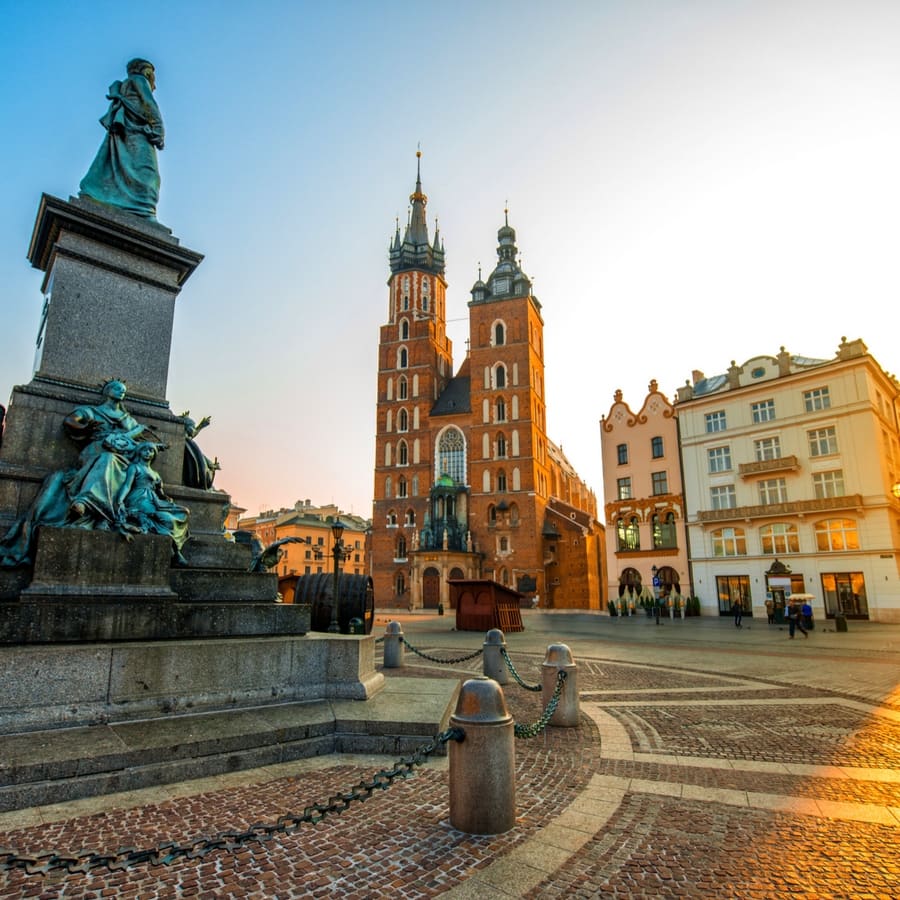
Day 11
Budapest to Krakow
View More
Day 11
Budapest to Krakow


8:00 AM - 4:00 PM
Shuttle Transfer from Budapest to Krakow through Slovakia
A private transfer with door-to-door service is certainly the most convenient way to travel. Unfortunately, there are no good train or bus connections between the cities, so while private transfers are expensive and not-so-carbon-friendly, they are the best option in this case. The 7-8 hour journey to Krakow takes you through the breathtaking landscape of mountainous Slovakia. While some of the route is along major highways, much of it will be along winding mountain roads, allowing you to experience the dramatic landscape, and see off the beaten path sights such as the dramatic Orava Castle.

Day 11
Budapest to Krakow
View More


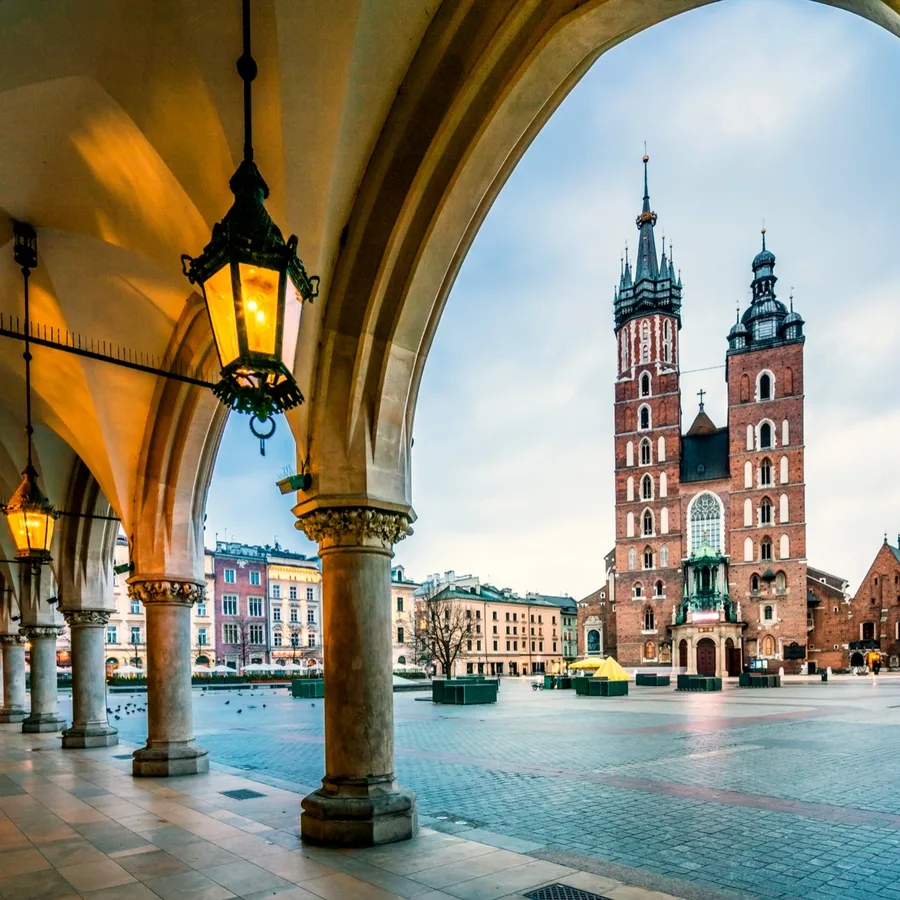
Day 12
Krakow
View More
Day 12
Krakow




9:00 AM - 12:00 PM
Walking Tour of Krakow's Historic Center
On this three-hour guided walking tour, you will discover the history and legends of old Krakow and gain an excellent overview of the city. The many layers of the city will be revealed to you as your guide points out medieval, Renaissance, and Baroque architecture. You will learn about not only Krakow's glory days many centuries past but also about its more recent struggles during Nazism and Communism oppression.

Old Town-Rail Station Tunnel
Show More
Show More


Cloth Hall
Take home something special from a vast market hall built in the 14th century, which is surrounded by arcaded passageways and topped with rows of gargoyles.
Show More

Old Town-Rail Station Tunnel
Show More
Show More


Cloth Hall
Take home something special from a vast market hall built in the 14th century, which is surrounded by arcaded passageways and topped with rows of gargoyles.
Show More

Old Town-Rail Station Tunnel
Show More
Show More


Cloth Hall
Take home something special from a vast market hall built in the 14th century, which is surrounded by arcaded passageways and topped with rows of gargoyles.
Show More
prev
next

Day 12
Krakow
View More

Old Town-Rail Station Tunnel
 Highlight of Krakow Guided Walk
Highlight of Krakow Guided Walk
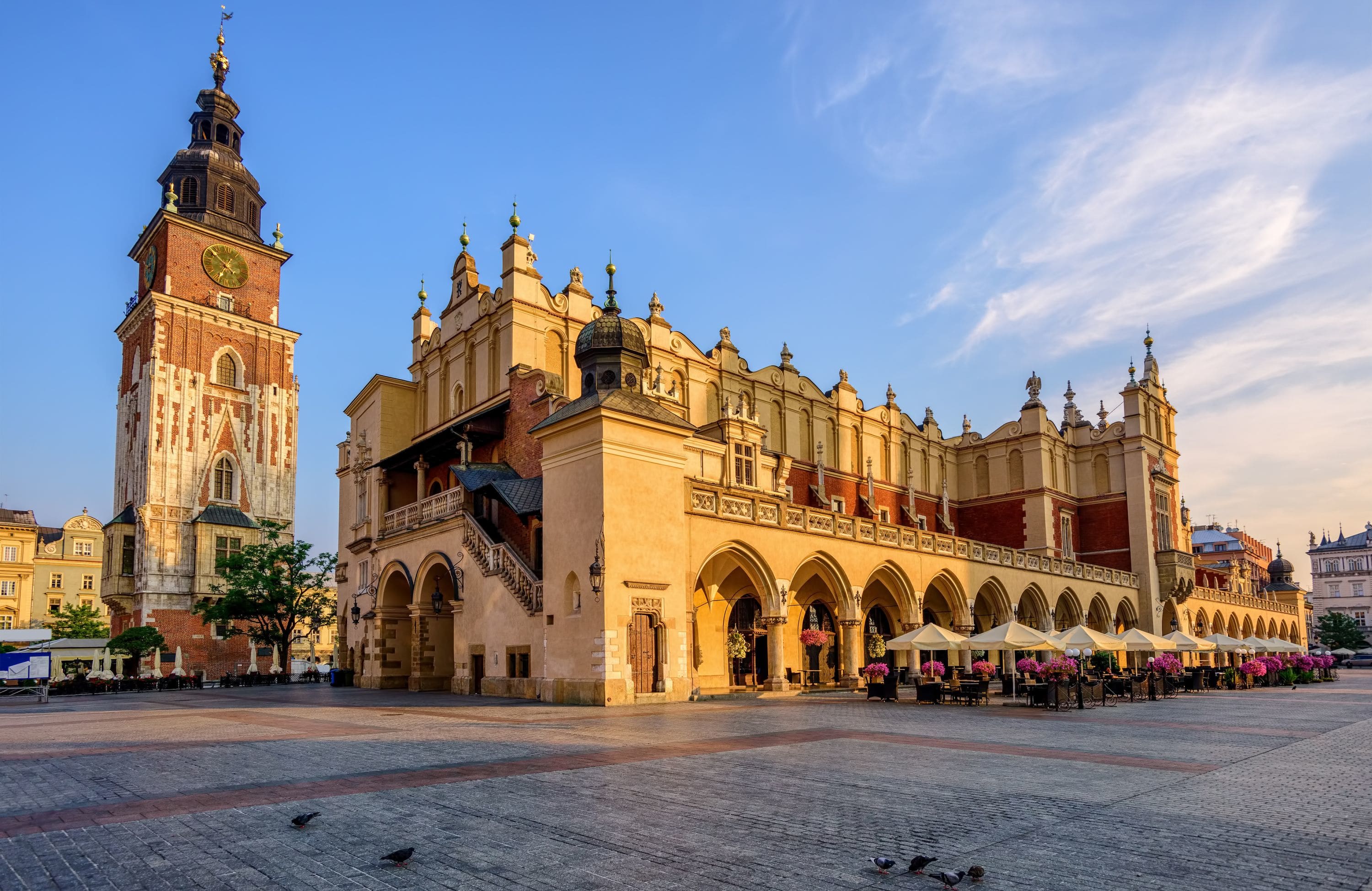
Cloth Hall
 Highlight of Krakow Guided Walk
Highlight of Krakow Guided WalkTake home something special from a vast market hall built in the 14th century, which is surrounded by arcaded passageways and topped with rows of gargoyles.
The covered market continues a centuries-old tradition with an eclectic range of goods of sale – you might be most interested in the amber jewelry or the handicraft items from the Podhale region. On the upper floor, you will find the 19th Century Polish Art Museum which features truly beautiful and under-appreciated artwork that packs a mighty patriotic punch.
Old Town-Rail Station Tunnel
 Highlight of Krakow Guided Walk
Highlight of Krakow Guided Walk

Cloth Hall
 Highlight of Krakow Guided Walk
Highlight of Krakow Guided WalkTake home something special from a vast market hall built in the 14th century, which is surrounded by arcaded passageways and topped with rows of gargoyles.
The covered market continues a centuries-old tradition with an eclectic range of goods of sale – you might be most interested in the amber jewelry or the handicraft items from the Podhale region. On the upper floor, you will find the 19th Century Polish Art Museum which features truly beautiful and under-appreciated artwork that packs a mighty patriotic punch.
Old Town-Rail Station Tunnel
 Highlight of Krakow Guided Walk
Highlight of Krakow Guided Walk

Cloth Hall
 Highlight of Krakow Guided Walk
Highlight of Krakow Guided WalkTake home something special from a vast market hall built in the 14th century, which is surrounded by arcaded passageways and topped with rows of gargoyles.
The covered market continues a centuries-old tradition with an eclectic range of goods of sale – you might be most interested in the amber jewelry or the handicraft items from the Podhale region. On the upper floor, you will find the 19th Century Polish Art Museum which features truly beautiful and under-appreciated artwork that packs a mighty patriotic punch.
prev
next

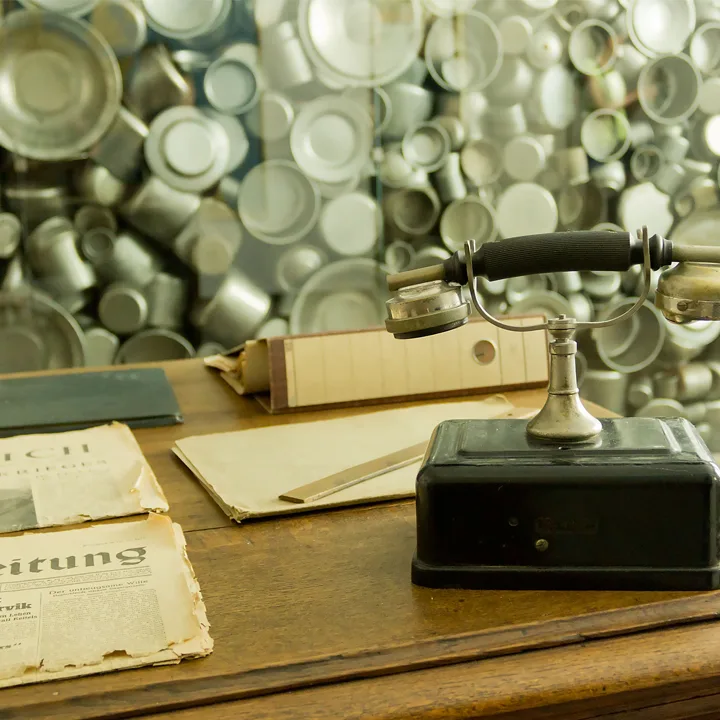
Day 13
Krakow
View More
Day 13
Krakow


Morning/Mid-Day
Visit to the Schindler's Factory Museum and the Former Ghetto
During World War II Oscar Schindler saved the lives of more than 1,100 Jews by employing them in his enamelware factory in Krakow. Until recently still used as a factory, the building now houses one of Europe's most impressive new museums. It tells not only the story of Schindler and the Jews he protected, but of the wider experience of Krakow during World War II.

Podgórze
Wander the streets of the former Jewish Ghetto.
Show More

Podgórze
Wander the streets of the former Jewish Ghetto.
Show More

Podgórze
Wander the streets of the former Jewish Ghetto.
Show More

Podgórze
Wander the streets of the former Jewish Ghetto.
Show More

Podgórze
Wander the streets of the former Jewish Ghetto.
Show More
prev
next

Day 13
Krakow
View More

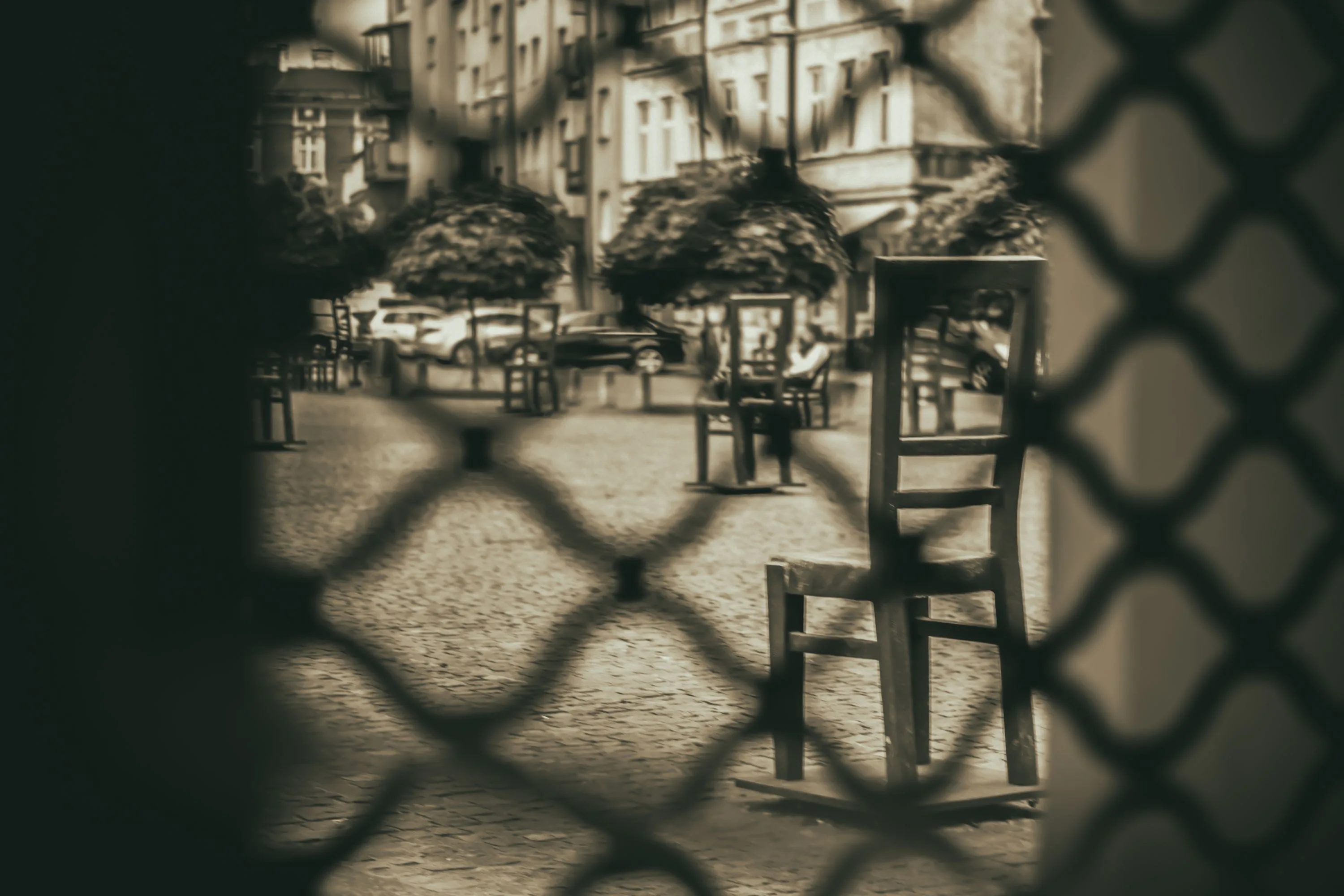
Podgórze
 Highlight of Schindler's Factory Museum
Highlight of Schindler's Factory MuseumWander the streets of the former Jewish Ghetto.
Podgórze is the neighborhood where the Krakow Jewish Ghetto was located. At the beginning of the war, only about 3,000 people lived in the district, but over 15,000 Jews were forcibly moved there and surrounded by tall walls and guarded gates. In 1942-3 the ghetto was "liquidated", with residents sent to either labor camps or extermination camps, or simply murdered in the streets. A couple small sections of the wall and a memorial of empty chairs (each chair representing a 1,000 victims) on the ghetto square are among the very few remaining physical reminders of the ghetto. On the corner of the square, you can also visit the small museum of the Apteka pod Orlem (Pharmacy under the Eagle), which was the only pharmacy allowed to operate in the ghetto. The Polish Catholic owner requested permission to operate within the ghetto and provided medical supplies to residents, often for free. Both he and Oscar Schindler were honored by Israel as "Righteous Among the Nations".

Podgórze
 Highlight of Schindler's Factory Museum
Highlight of Schindler's Factory MuseumWander the streets of the former Jewish Ghetto.
Podgórze is the neighborhood where the Krakow Jewish Ghetto was located. At the beginning of the war, only about 3,000 people lived in the district, but over 15,000 Jews were forcibly moved there and surrounded by tall walls and guarded gates. In 1942-3 the ghetto was "liquidated", with residents sent to either labor camps or extermination camps, or simply murdered in the streets. A couple small sections of the wall and a memorial of empty chairs (each chair representing a 1,000 victims) on the ghetto square are among the very few remaining physical reminders of the ghetto. On the corner of the square, you can also visit the small museum of the Apteka pod Orlem (Pharmacy under the Eagle), which was the only pharmacy allowed to operate in the ghetto. The Polish Catholic owner requested permission to operate within the ghetto and provided medical supplies to residents, often for free. Both he and Oscar Schindler were honored by Israel as "Righteous Among the Nations".

Podgórze
 Highlight of Schindler's Factory Museum
Highlight of Schindler's Factory MuseumWander the streets of the former Jewish Ghetto.
Podgórze is the neighborhood where the Krakow Jewish Ghetto was located. At the beginning of the war, only about 3,000 people lived in the district, but over 15,000 Jews were forcibly moved there and surrounded by tall walls and guarded gates. In 1942-3 the ghetto was "liquidated", with residents sent to either labor camps or extermination camps, or simply murdered in the streets. A couple small sections of the wall and a memorial of empty chairs (each chair representing a 1,000 victims) on the ghetto square are among the very few remaining physical reminders of the ghetto. On the corner of the square, you can also visit the small museum of the Apteka pod Orlem (Pharmacy under the Eagle), which was the only pharmacy allowed to operate in the ghetto. The Polish Catholic owner requested permission to operate within the ghetto and provided medical supplies to residents, often for free. Both he and Oscar Schindler were honored by Israel as "Righteous Among the Nations".

Podgórze
 Highlight of Schindler's Factory Museum
Highlight of Schindler's Factory MuseumWander the streets of the former Jewish Ghetto.
Podgórze is the neighborhood where the Krakow Jewish Ghetto was located. At the beginning of the war, only about 3,000 people lived in the district, but over 15,000 Jews were forcibly moved there and surrounded by tall walls and guarded gates. In 1942-3 the ghetto was "liquidated", with residents sent to either labor camps or extermination camps, or simply murdered in the streets. A couple small sections of the wall and a memorial of empty chairs (each chair representing a 1,000 victims) on the ghetto square are among the very few remaining physical reminders of the ghetto. On the corner of the square, you can also visit the small museum of the Apteka pod Orlem (Pharmacy under the Eagle), which was the only pharmacy allowed to operate in the ghetto. The Polish Catholic owner requested permission to operate within the ghetto and provided medical supplies to residents, often for free. Both he and Oscar Schindler were honored by Israel as "Righteous Among the Nations".

Podgórze
 Highlight of Schindler's Factory Museum
Highlight of Schindler's Factory MuseumWander the streets of the former Jewish Ghetto.
Podgórze is the neighborhood where the Krakow Jewish Ghetto was located. At the beginning of the war, only about 3,000 people lived in the district, but over 15,000 Jews were forcibly moved there and surrounded by tall walls and guarded gates. In 1942-3 the ghetto was "liquidated", with residents sent to either labor camps or extermination camps, or simply murdered in the streets. A couple small sections of the wall and a memorial of empty chairs (each chair representing a 1,000 victims) on the ghetto square are among the very few remaining physical reminders of the ghetto. On the corner of the square, you can also visit the small museum of the Apteka pod Orlem (Pharmacy under the Eagle), which was the only pharmacy allowed to operate in the ghetto. The Polish Catholic owner requested permission to operate within the ghetto and provided medical supplies to residents, often for free. Both he and Oscar Schindler were honored by Israel as "Righteous Among the Nations".
prev
next


Day 14
Depart Krakow
View More
Day 14
Depart Krakow

To Be Determined
Transfer to Airport by Taxi or Train
Krakow has one main airport, Kraków John Paul II International Airport, where almost all visitors depart. The most affordable and fast way to reach the airport is by train. The regional train takes less than 20 minutes and leaves directly from the main station in central Krakow. Your hotel can also arrange a reliable taxi or if you have the app, Uber is also a good option. You can also arrange a private transfer. If you are picked up about two hours and 45 minutes before your departure time, you should arrive at the airport with over 2 hours to spare, depending on traffic. If you are leaving during rush hour, you may want to budget an extra fifteen to thirty minutes.

Day 14
Depart Krakow
View More


What's Included In Your Trip

Pre-Paid Tours and Activities:
- Highlights of Berlin Guided Walking Tour
- Prague Castle & Royal Route Guided Walk
- Guided Walk through Vienna's Inner City
- Best of Budapest: Half-Day Walking Tour of Highlights & Hidden Finds
- Walking Tour of Krakow's Historic Center
- City Cards for Krakow and Berlin, including discounts to many popular attractions

Pre-Paid Transportation:
- 2nd Class Train Tickets from Berlin to Prague
- 2nd Class Train Tickets from Prague to Vienna
- 2nd Class Train Tickets from Wien Hbf to Budapest-Keleti
- Shuttle Service from Budapest to Krakow
- Public Transport Tickets for Krakow, Berlin, and Vienna
- Private Transfer from the Budapest Rail Station

Accommodation:
- 3 nights at a hotel of your choice in Berlin
- 4 nights at a hotel of your choice in Prague
- 3 nights at a hotel of your choice in Vienna
- 4 nights at a hotel of your choice in Budapest
- 4 nights at a hotel of your choice in Krakow

Go Real Travel Mobile App:
- Itinerary Plan & Reservations Info
- Points of Interest
- Detailed Travel Information
- Maps & Directions
Other Trips You May Like
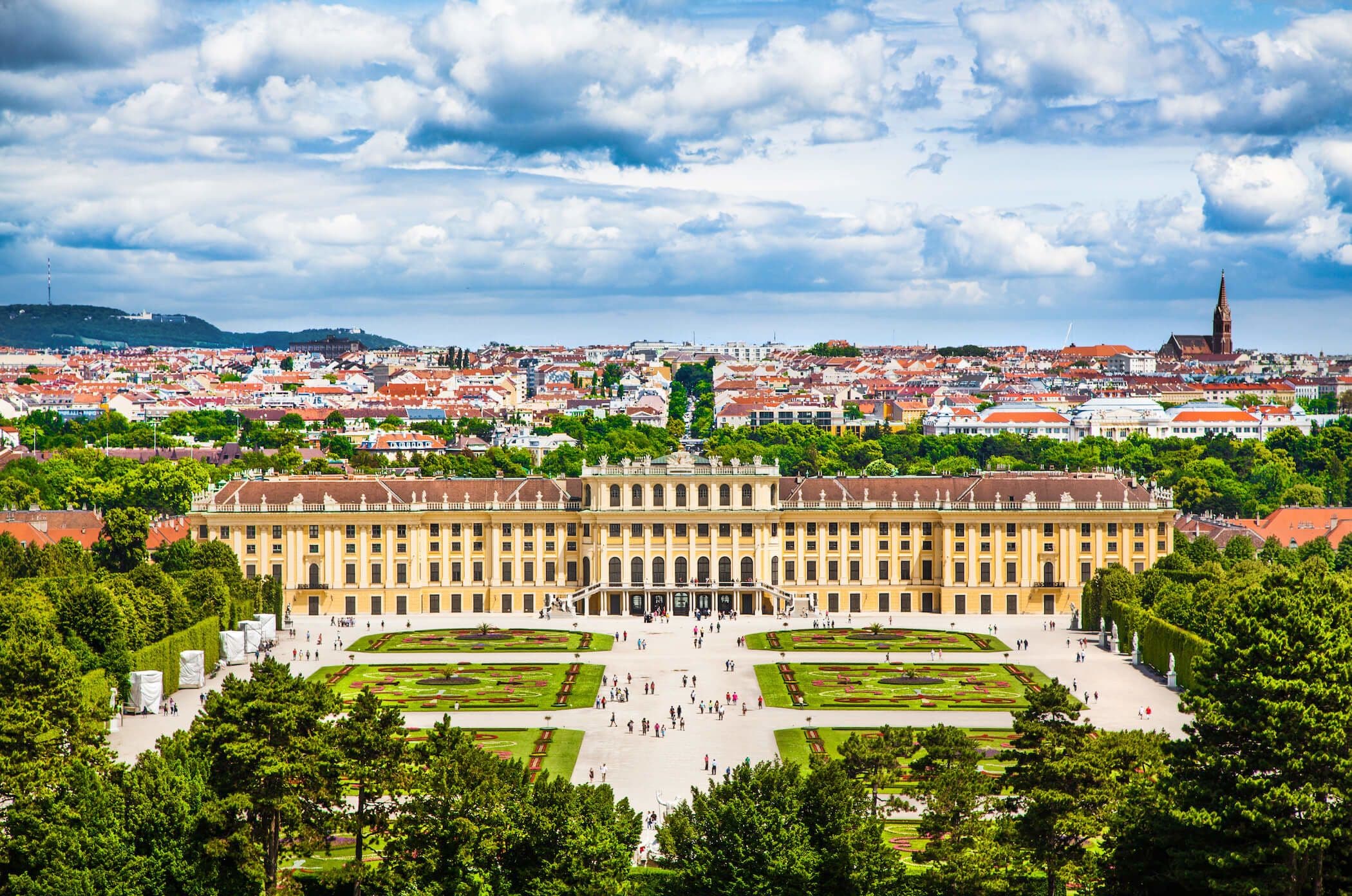
11 Days
From$2045USD
11 Day Itinerary in Berlin, Prague & Vienna: Castles, Palaces, and Much More

Germany, Czech Republic, Austria

15 Days
From$2750USD
Prague, Vienna, and Budapest, 15 Days of Must See Sights & Local Scenes

Czech Republic, Austria, Hungary

8 Days
From$1425USD
Enchanting Central Europe: 8-Days in Prague, Vienna & Budapest

Czech Republic, Austria, Hungary

12 Days
From$2675USD
Jewish Heritage and Scenic Rivers: A Journey through Prague, Vienna, and Budapest

Hungary, Austria, Czech Republic

12 Days
From$2350USD

15 Days
From$2575USD
Highlights of Budapest, Vienna, Prague, Krakow & Warsaw in 15 days

Hungary, Austria, Czech Republic, Poland

21 Days
From$5789USD
Jewels of Europe: Art, History and Waterways in Paris, Amsterdam, Berlin, Prague, Vienna & Budapest

France, Netherlands, Germany, Czech Republic, Austria, Hungary

14 Days
From$2350USD
Imperial Elegance: Prague, Vienna and Budapest Itinerary 14 Days

Czech Republic, Austria, Hungary

7 Days
From$1489USD

11 Days
From$2045USD
11 Day Itinerary in Berlin, Prague & Vienna: Castles, Palaces, and Much More

Germany, Czech Republic, Austria

15 Days
From$2750USD
Prague, Vienna, and Budapest, 15 Days of Must See Sights & Local Scenes

Czech Republic, Austria, Hungary

8 Days
From$1425USD
Enchanting Central Europe: 8-Days in Prague, Vienna & Budapest

Czech Republic, Austria, Hungary

12 Days
From$2675USD
Jewish Heritage and Scenic Rivers: A Journey through Prague, Vienna, and Budapest

Hungary, Austria, Czech Republic

12 Days
From$2350USD

15 Days
From$2575USD
Highlights of Budapest, Vienna, Prague, Krakow & Warsaw in 15 days

Hungary, Austria, Czech Republic, Poland

21 Days
From$5789USD
Jewels of Europe: Art, History and Waterways in Paris, Amsterdam, Berlin, Prague, Vienna & Budapest

France, Netherlands, Germany, Czech Republic, Austria, Hungary

14 Days
From$2350USD
Imperial Elegance: Prague, Vienna and Budapest Itinerary 14 Days

Czech Republic, Austria, Hungary

7 Days
From$1489USD
prev
next
Featured Blogs
prev
next
Our Customers Say It Best
Otto Chuy, Los Angeles, California
I am still surprised how everything worked as planned, without a hitch. All instructions in your itinerary were precise and correct. Your suggestions and comments in each of the locations we went to were very helpful. All your guides, without exception, were wonderful and exactly on time. 

Kathy Mongeau, Ottawa, Ontario
My sister, Ann Ibberson, and I have been back home for a few weeks now and still go on and on about our fabulous trip. We were just blown away in every respect. Given the fact that we only had 1 ½ weeks, you had everything arranged for us so efficiently and your contacts who we dealt with for transfers, tours, hotels were extremely professional and personable. Things could not have gone better. 

Clive Andrew, Brisbane, Queensland
Just a quick note to let you know that I am back home now after probably the best overseas holiday that I have ever had, in no small part due to your very capable organization booking of hotels, tours, & trains. There was just nothing that went wrong with the timings etc. 

Malini Dutta, Boston, Massachusetts
We can't thank you enough for the detailed plans, maps, and suggestions. It really felt that someone was holding our hands and showing us around. We had all the excitement of discovering foreign lands, with none of the problems that can happen while negotiating unfamiliar places. In fact, all the cities felt like home within a few hours of arriving and exploring. 

Bev and Mark Frankel, Williamsburg, Virginia
We could not be more pleased with Go Real Travel! You took the guess work out of things like public transport but still managed to allow us the freedom to tour as we wanted. Our guides were exceptional and every time I saw a Viking Cruise tour of 25 people, I realized the quality experience we were getting with Go Real. 

Marianne Strydom, Paarl, South Africa
I just wanted to thank you for organizing an amazing trip for me – I packed in so much in such a short period of time and everything was just perfect. The way you do things makes it possible to really get to know the destination, which for me as a travel agent could not have been better. 

Otto Chuy, Los Angeles, California
I am still surprised how everything worked as planned, without a hitch. All instructions in your itinerary were precise and correct. Your suggestions and comments in each of the locations we went to were very helpful. All your guides, without exception, were wonderful and exactly on time. 

Kathy Mongeau, Ottawa, Ontario
My sister, Ann Ibberson, and I have been back home for a few weeks now and still go on and on about our fabulous trip. We were just blown away in every respect. Given the fact that we only had 1 ½ weeks, you had everything arranged for us so efficiently and your contacts who we dealt with for transfers, tours, hotels were extremely professional and personable. Things could not have gone better. 

Clive Andrew, Brisbane, Queensland
Just a quick note to let you know that I am back home now after probably the best overseas holiday that I have ever had, in no small part due to your very capable organization booking of hotels, tours, & trains. There was just nothing that went wrong with the timings etc. 

Malini Dutta, Boston, Massachusetts
We can't thank you enough for the detailed plans, maps, and suggestions. It really felt that someone was holding our hands and showing us around. We had all the excitement of discovering foreign lands, with none of the problems that can happen while negotiating unfamiliar places. In fact, all the cities felt like home within a few hours of arriving and exploring. 

Bev and Mark Frankel, Williamsburg, Virginia
We could not be more pleased with Go Real Travel! You took the guess work out of things like public transport but still managed to allow us the freedom to tour as we wanted. Our guides were exceptional and every time I saw a Viking Cruise tour of 25 people, I realized the quality experience we were getting with Go Real. 

Marianne Strydom, Paarl, South Africa
I just wanted to thank you for organizing an amazing trip for me – I packed in so much in such a short period of time and everything was just perfect. The way you do things makes it possible to really get to know the destination, which for me as a travel agent could not have been better. 



Explore cities in more detail
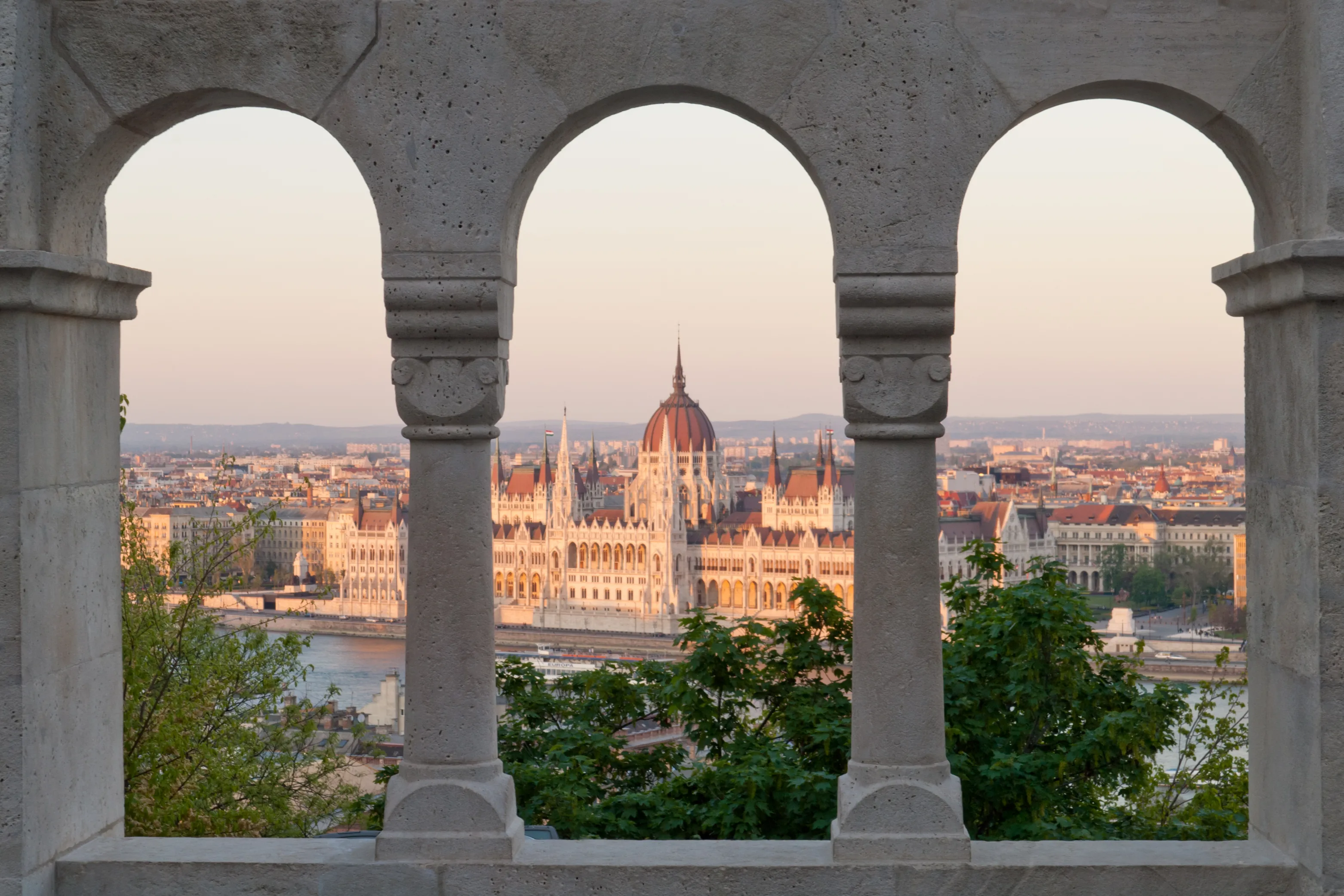
Budapest
Situated at the heart of Europe, Budapest is the capital of Hungary, appropriately named 'The Pearl of the Danube,' for its fixating and almost haunting beauty. Formerly two separate cities, Buda and Pest were forged into one by time, occupation, and the eight bridges that anchor them together today. From the Romans to the Communists, each occupier left its flavor profile in Budapest, evident in the famous spicy Hungarian stew known as 'goulash.' Budapest is a melting pot of history, culture, and taste, from the magnificent Baroque and neo-Gothic architecture to the Turkish thermal baths. After a long day of sightseeing, treat yourself to a glass of Tokaj, what King Louis XIV of France referred to as the "Wine of Kings, King of Wines". Budapest has a flavor to satisfy any taste.
Read More
Learn About Budapest
Build Budapest Trip

Krakow
Krakow is a city in the south of Poland and the country’s former royal capital. Thought to have been inhabited for tens of thousands of years, the history here seems to sit comfortably alongside the vibrant, young city that is Krakow today. The main market square at Krakow’s center is overlooked by St Mary’s Basilica, a perfect example of Polish Gothic architecture and a UNESCO World Heritage Site. The square itself is usually filled with life, as the pubs and restaurants around the edges spill out onto the sidewalks. Winter is cold here, but that’s just a perfect excuse to slip inside a cozy, well-heated pub and sip hot mulled wine over a hearty Polish dinner. With all of Krakow’s heady charm, it can be easy to forget the all-too-recent atrocities that occurred in this region. A short trip to the Auschwitz-Birkenau concentration camp nearby, where the Nazis committed their genocide, provides a sober but important reminder of that past. A hard past exists alongside a happy and electric present in Krakow, a city that has endured centuries of trials and emerged looking better than ever.
Read More
Learn About Krakow
Build Krakow Trip
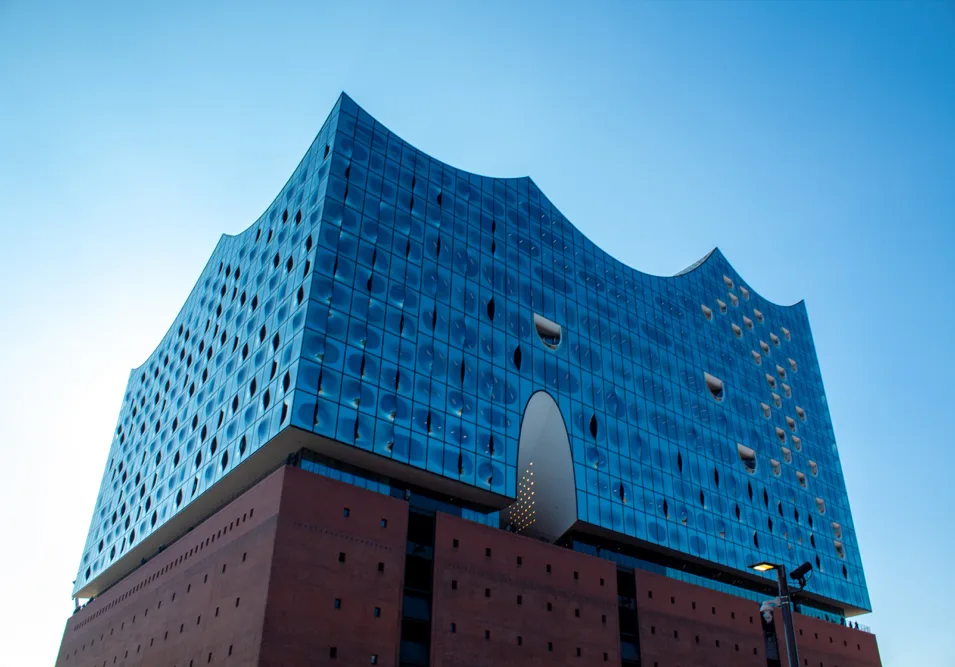
Hamburg
Compared to other German cities, Hamburg has a moody, nautical charisma all of its own. Despite being battered throughout history by floods, fires, and bombs, Hamburg has always held its head up high. Resilience is in the air in Hamburg, along with the briny smell of the North Sea. In recent years Hamburg has garnered a reputation for commerce and nightlife. Frequent travelers whisper that Hamburg is Germany’s ‘undiscovered’ city, the place to go for a little business and a lot of fun. Known as Germany’s ‘gateway to the world’, ships dock in Hamburg as they haul cargo up and down the Elbe River. The city thrives as Germany’s primary seaport and has been a center of trade since the middle ages. Its affluence shows in the 19th-century brick warehouses, flourishing restaurant scene, and recently constructed Elbphilharmonie concert hall, which floats majestically in the harbor, part ship and part island. Hamburg is a city for those who like to live large - in a cultured, German kind of way. Attend a performance at the orchestra, cruise on a boat around the Außenalster Lake, or have a night on the Reeperbahn, the Vegas-like strip where the Beatles once performed. Whatever you do in the city, Hamburg will make you look twice and see Germany from a totally different point of view.
Read More
Learn About Hamburg
Build Hamburg Trip
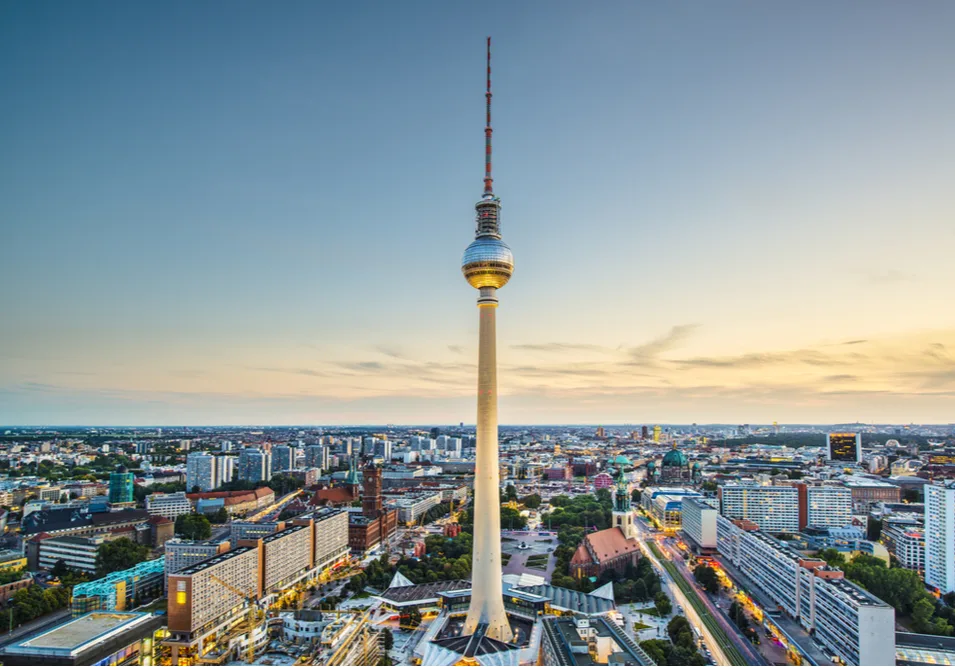
Berlin
Since the fall of its notorious wall, Berlin’s unification has seen it go from strength to strength. No wonder the city feels like it hasn’t stopped partying since the 1990s. There is so much to celebrate here. Fueled by the robust economy, a thriving tech scene, and straight-up German bonhomie, when you step into Berlin you’ll soon be caught up in its spirit. For all this gusto, Berlin hasn’t forgotten its troubled past. A visit to Berlin is to bear witness to history. Portions of the wall remain intact, and the city’s Jewish Museum offers a detailed, emotional examination of the Holocaust. Inside the reconstructed Reichstag, every attempt has been made to preserve the parliament’s beleaguered history. The buildings' glass dome addition feels less like a triumphal crown and more like a freshly healed battle scar. Days in Berlin are easily spent wandering from a cafe to the cultural institutions on Museum Island, or over to the Charlottenburg Palace. By night, crowds wander through the booming bars and nightclubs or gaze upon the floodlit Brandenburg Gate and Victory Column monuments. An international city that can offer something to everyone, Berlin is an unmissable stop on your German journey.
Read More
Learn About Berlin
Build Berlin Trip

Prague
The city of Prague is indisputably the gem of Central Europe. Full of history, culture, and classic Czech pubs around every corner, Prague is teeming with nooks and crannies just waiting to be discovered. The narrow cobblestone streets and warm red rooftops give the city a homey feel, while the well-preserved medieval architecture transports you back in time. Walking across the Charles Bridge with the view of the Prague Castle will make you feel like you’re living in a fairytale, and you might as well be. As an up-and-coming destination, Prague is a perfect mix of classic and modern. New trendy cafes and bistros are always popping up, and you can always find a group of lively locals chowing down on goulash and quaffing pivo (the best beer in Europe!) at traditional Czech restaurants across the city. The clash of modernity and tradition, preservation and innovation, gives this city a mysterious air that you won’t soon forget.
Read More
Learn About Prague
Build Prague Trip

Vienna
Artistic and musical, historical and elegant, Vienna is the definition of class. The seat of the Habsburg monarchy for over six centuries, it's no wonder this city is still fit for royalty. Baroque buildings and imperial palaces dominate the cityscape, while locals stride gracefully through the streets, likely on their way to a classical music concert or art exhibition. Visitors from all over the world flock to Schonbrunn Palace, historical museums, and local eateries for authentic Viennese schnitzel. Vienna is also home to world-class wining and dining. Famous dishes include Wiener schnitzel, Tafelspitz (prime boiled beef), and apfelstrudel (apple strudel), all of which pair well with a glass of fine Austrian wine. No matter how long you spend in Vienna, you'll leave with a new appreciation for the finer things in life.
Read More
Learn About Vienna
Build Vienna Trip

Budapest
Situated at the heart of Europe, Budapest is the capital of Hungary, appropriately named 'The Pearl of the Danube,' for its fixating and almost haunting beauty. Formerly two separate cities, Buda and Pest were forged into one by time, occupation, and the eight bridges that anchor them together today. From the Romans to the Communists, each occupier left its flavor profile in Budapest, evident in the famous spicy Hungarian stew known as 'goulash.' Budapest is a melting pot of history, culture, and taste, from the magnificent Baroque and neo-Gothic architecture to the Turkish thermal baths. After a long day of sightseeing, treat yourself to a glass of Tokaj, what King Louis XIV of France referred to as the "Wine of Kings, King of Wines". Budapest has a flavor to satisfy any taste.
Read More
Learn About Budapest
Build Budapest Trip

Krakow
Krakow is a city in the south of Poland and the country’s former royal capital. Thought to have been inhabited for tens of thousands of years, the history here seems to sit comfortably alongside the vibrant, young city that is Krakow today. The main market square at Krakow’s center is overlooked by St Mary’s Basilica, a perfect example of Polish Gothic architecture and a UNESCO World Heritage Site. The square itself is usually filled with life, as the pubs and restaurants around the edges spill out onto the sidewalks. Winter is cold here, but that’s just a perfect excuse to slip inside a cozy, well-heated pub and sip hot mulled wine over a hearty Polish dinner. With all of Krakow’s heady charm, it can be easy to forget the all-too-recent atrocities that occurred in this region. A short trip to the Auschwitz-Birkenau concentration camp nearby, where the Nazis committed their genocide, provides a sober but important reminder of that past. A hard past exists alongside a happy and electric present in Krakow, a city that has endured centuries of trials and emerged looking better than ever.
Read More
Learn About Krakow
Build Krakow Trip

Hamburg
Compared to other German cities, Hamburg has a moody, nautical charisma all of its own. Despite being battered throughout history by floods, fires, and bombs, Hamburg has always held its head up high. Resilience is in the air in Hamburg, along with the briny smell of the North Sea. In recent years Hamburg has garnered a reputation for commerce and nightlife. Frequent travelers whisper that Hamburg is Germany’s ‘undiscovered’ city, the place to go for a little business and a lot of fun. Known as Germany’s ‘gateway to the world’, ships dock in Hamburg as they haul cargo up and down the Elbe River. The city thrives as Germany’s primary seaport and has been a center of trade since the middle ages. Its affluence shows in the 19th-century brick warehouses, flourishing restaurant scene, and recently constructed Elbphilharmonie concert hall, which floats majestically in the harbor, part ship and part island. Hamburg is a city for those who like to live large - in a cultured, German kind of way. Attend a performance at the orchestra, cruise on a boat around the Außenalster Lake, or have a night on the Reeperbahn, the Vegas-like strip where the Beatles once performed. Whatever you do in the city, Hamburg will make you look twice and see Germany from a totally different point of view.
Read More
Learn About Hamburg
Build Hamburg Trip

Berlin
Since the fall of its notorious wall, Berlin’s unification has seen it go from strength to strength. No wonder the city feels like it hasn’t stopped partying since the 1990s. There is so much to celebrate here. Fueled by the robust economy, a thriving tech scene, and straight-up German bonhomie, when you step into Berlin you’ll soon be caught up in its spirit. For all this gusto, Berlin hasn’t forgotten its troubled past. A visit to Berlin is to bear witness to history. Portions of the wall remain intact, and the city’s Jewish Museum offers a detailed, emotional examination of the Holocaust. Inside the reconstructed Reichstag, every attempt has been made to preserve the parliament’s beleaguered history. The buildings' glass dome addition feels less like a triumphal crown and more like a freshly healed battle scar. Days in Berlin are easily spent wandering from a cafe to the cultural institutions on Museum Island, or over to the Charlottenburg Palace. By night, crowds wander through the booming bars and nightclubs or gaze upon the floodlit Brandenburg Gate and Victory Column monuments. An international city that can offer something to everyone, Berlin is an unmissable stop on your German journey.
Read More
Learn About Berlin
Build Berlin Trip

Prague
The city of Prague is indisputably the gem of Central Europe. Full of history, culture, and classic Czech pubs around every corner, Prague is teeming with nooks and crannies just waiting to be discovered. The narrow cobblestone streets and warm red rooftops give the city a homey feel, while the well-preserved medieval architecture transports you back in time. Walking across the Charles Bridge with the view of the Prague Castle will make you feel like you’re living in a fairytale, and you might as well be. As an up-and-coming destination, Prague is a perfect mix of classic and modern. New trendy cafes and bistros are always popping up, and you can always find a group of lively locals chowing down on goulash and quaffing pivo (the best beer in Europe!) at traditional Czech restaurants across the city. The clash of modernity and tradition, preservation and innovation, gives this city a mysterious air that you won’t soon forget.
Read More
Learn About Prague
Build Prague Trip

Vienna
Artistic and musical, historical and elegant, Vienna is the definition of class. The seat of the Habsburg monarchy for over six centuries, it's no wonder this city is still fit for royalty. Baroque buildings and imperial palaces dominate the cityscape, while locals stride gracefully through the streets, likely on their way to a classical music concert or art exhibition. Visitors from all over the world flock to Schonbrunn Palace, historical museums, and local eateries for authentic Viennese schnitzel. Vienna is also home to world-class wining and dining. Famous dishes include Wiener schnitzel, Tafelspitz (prime boiled beef), and apfelstrudel (apple strudel), all of which pair well with a glass of fine Austrian wine. No matter how long you spend in Vienna, you'll leave with a new appreciation for the finer things in life.
Read More
Learn About Vienna
Build Vienna Trip
prev
next


 Map of Your Itinerary Route
Map of Your Itinerary Route
Zoom In to the cities to see your itinerary in more detail


 4.8
4.8 
